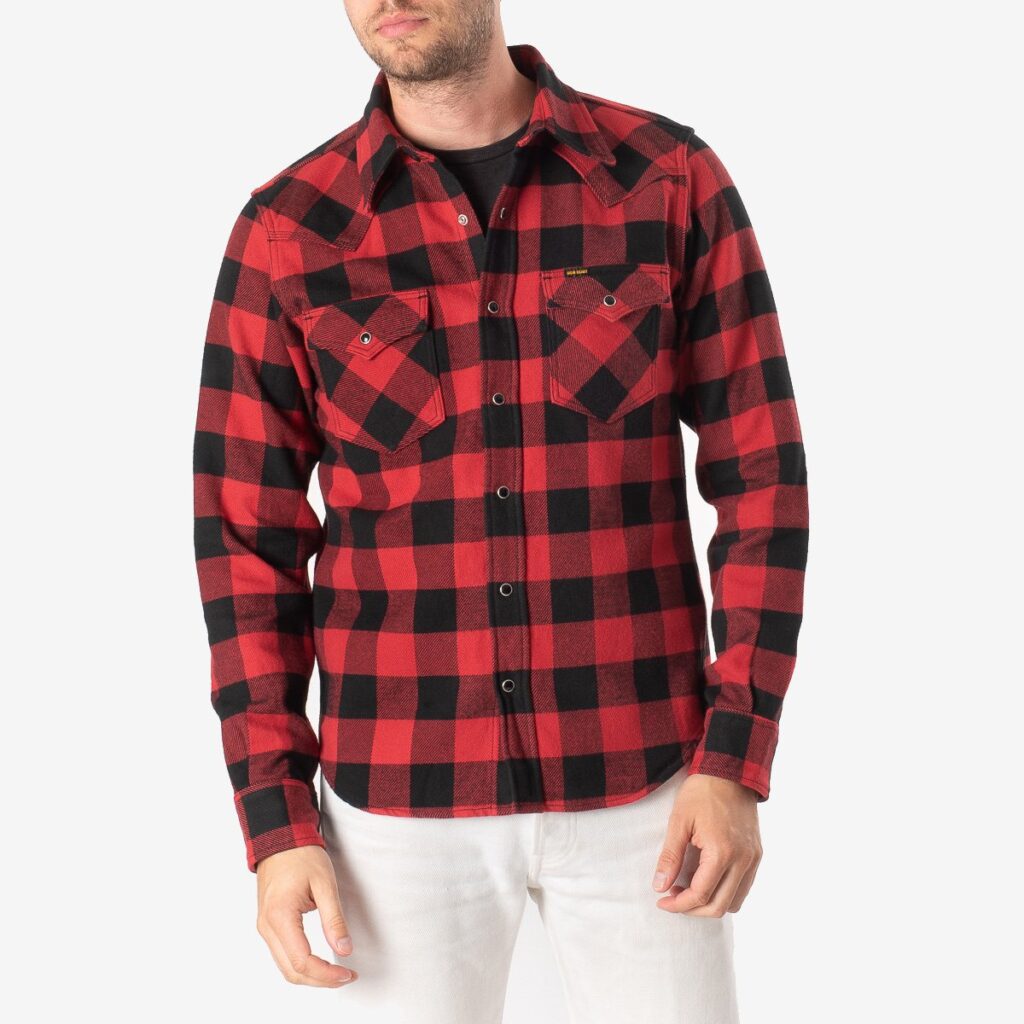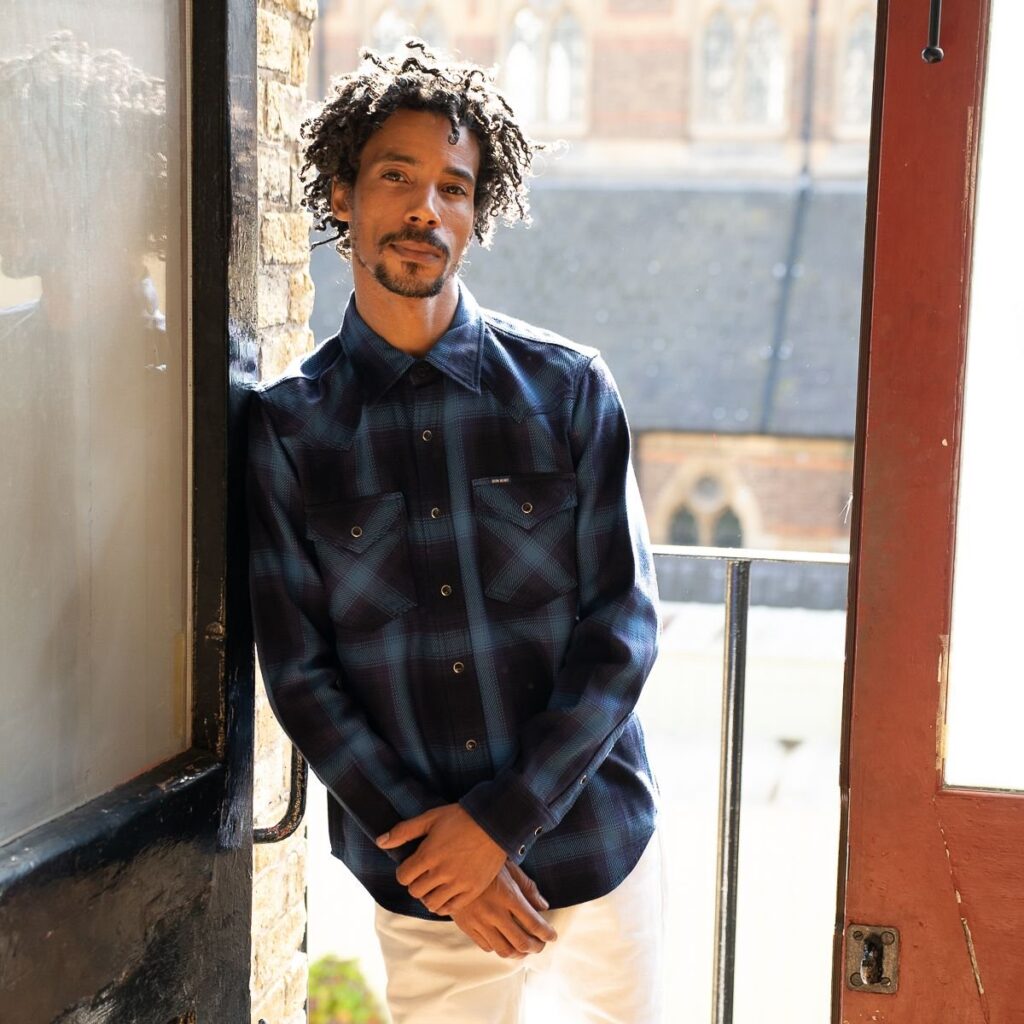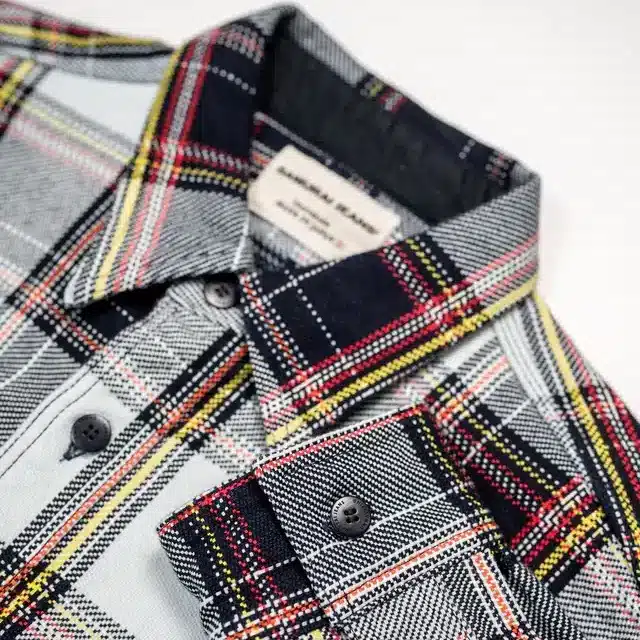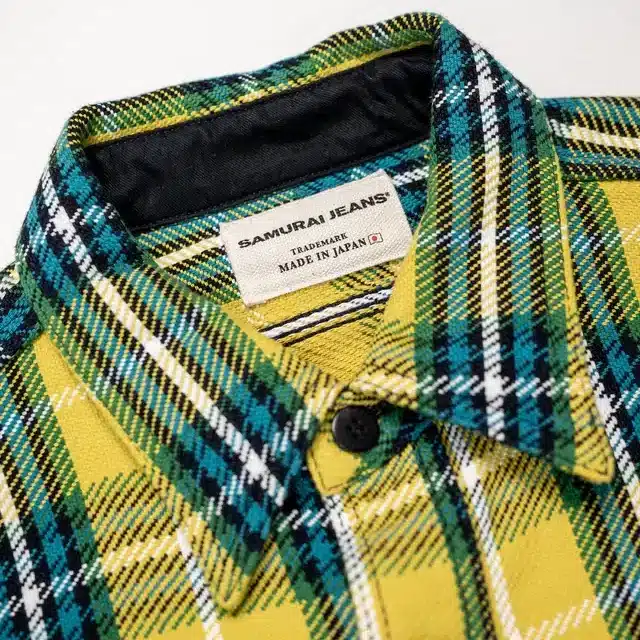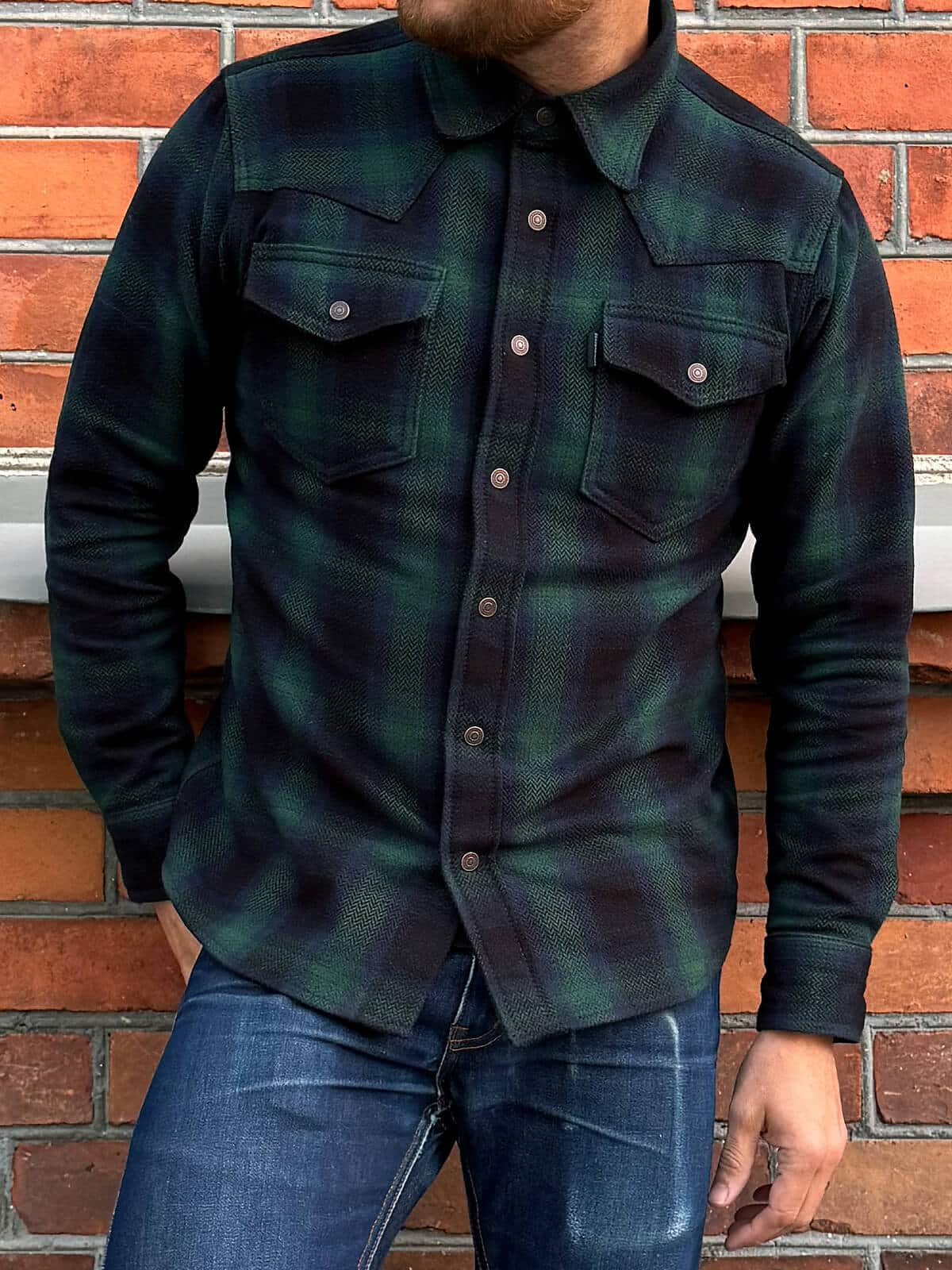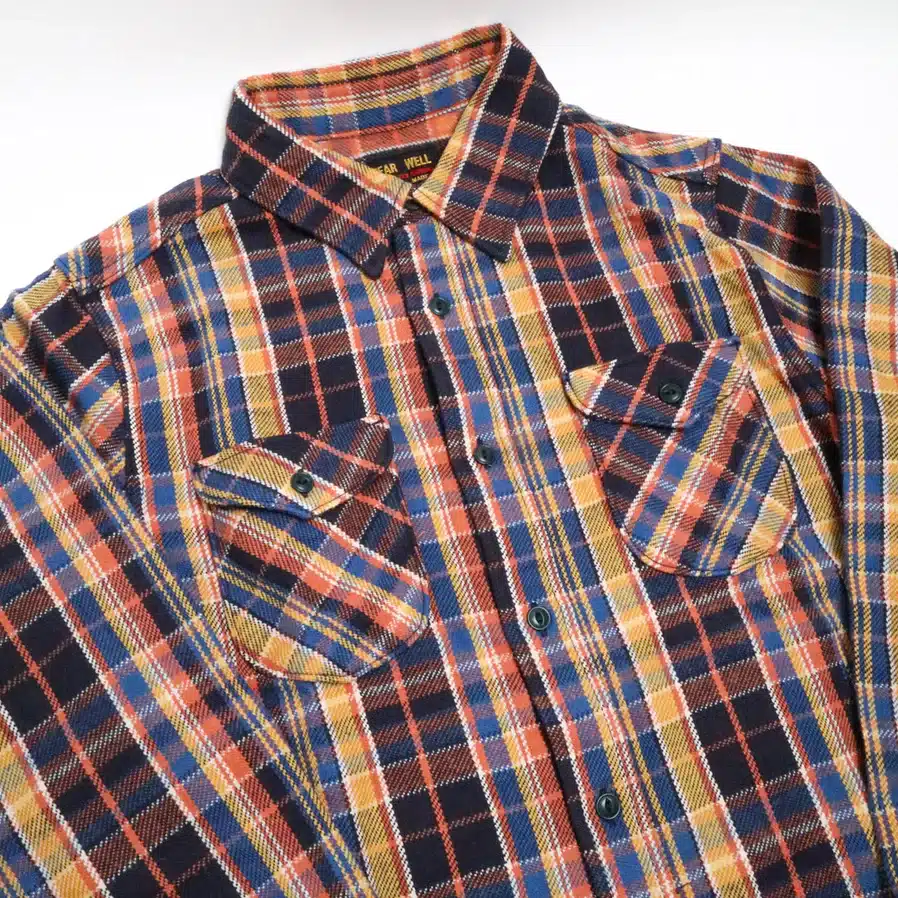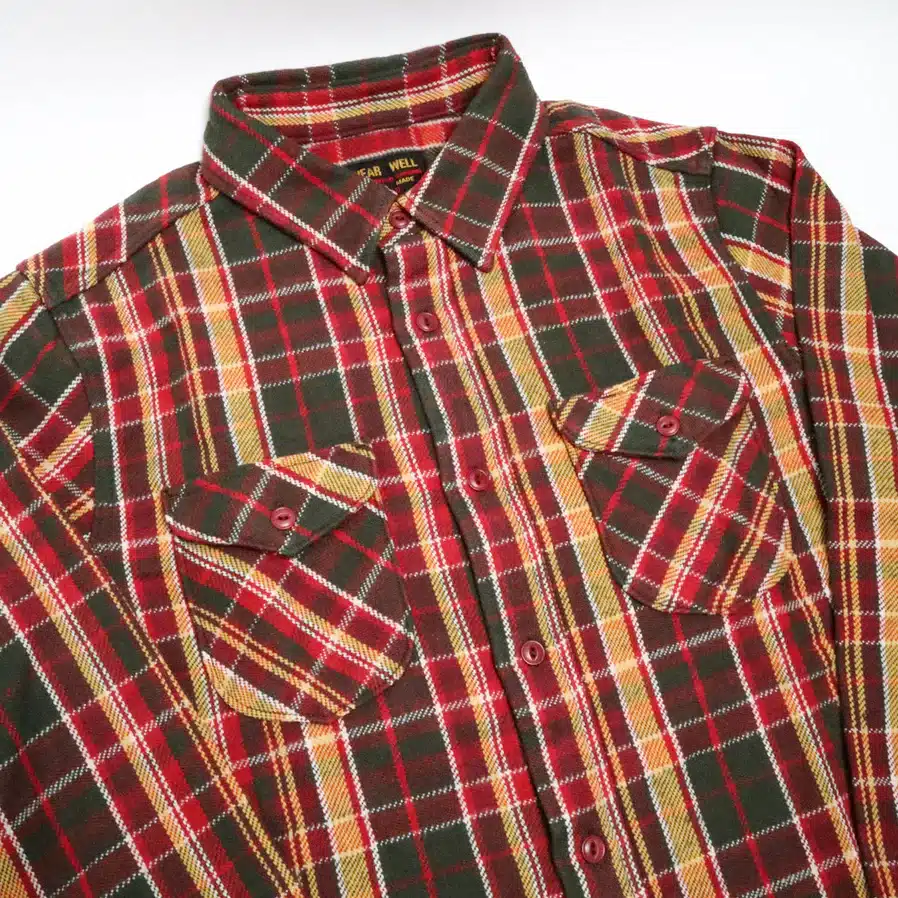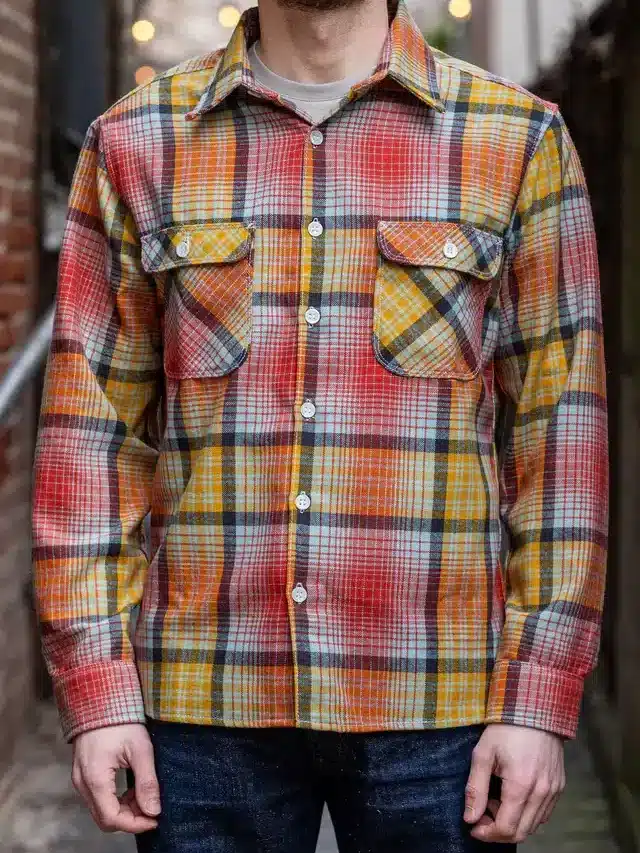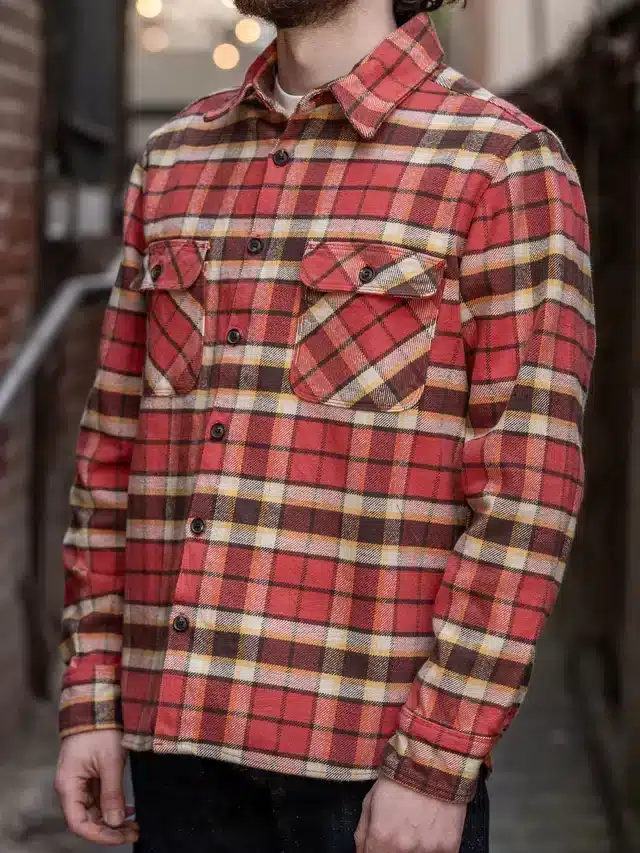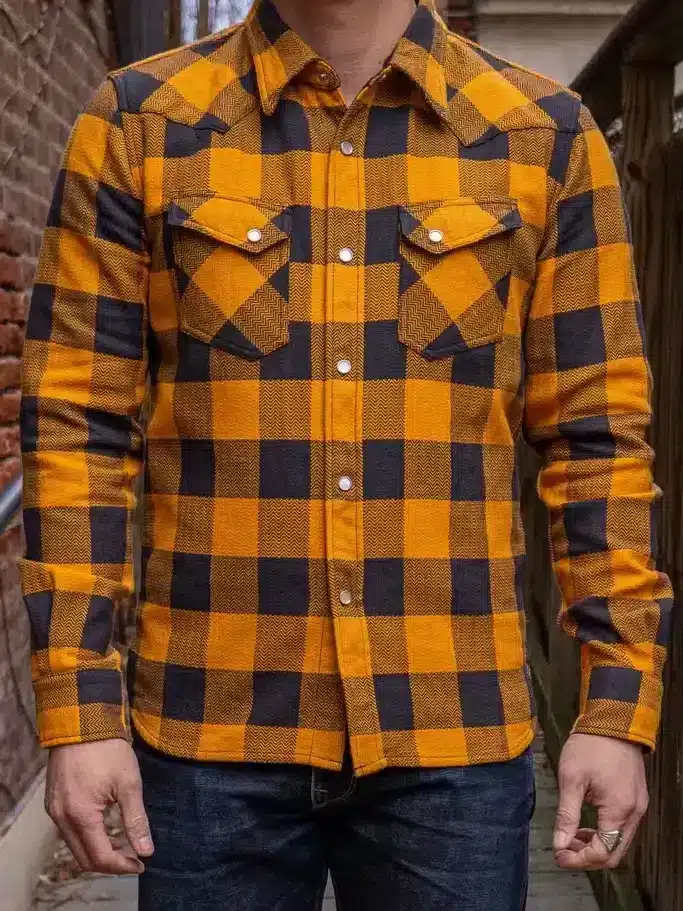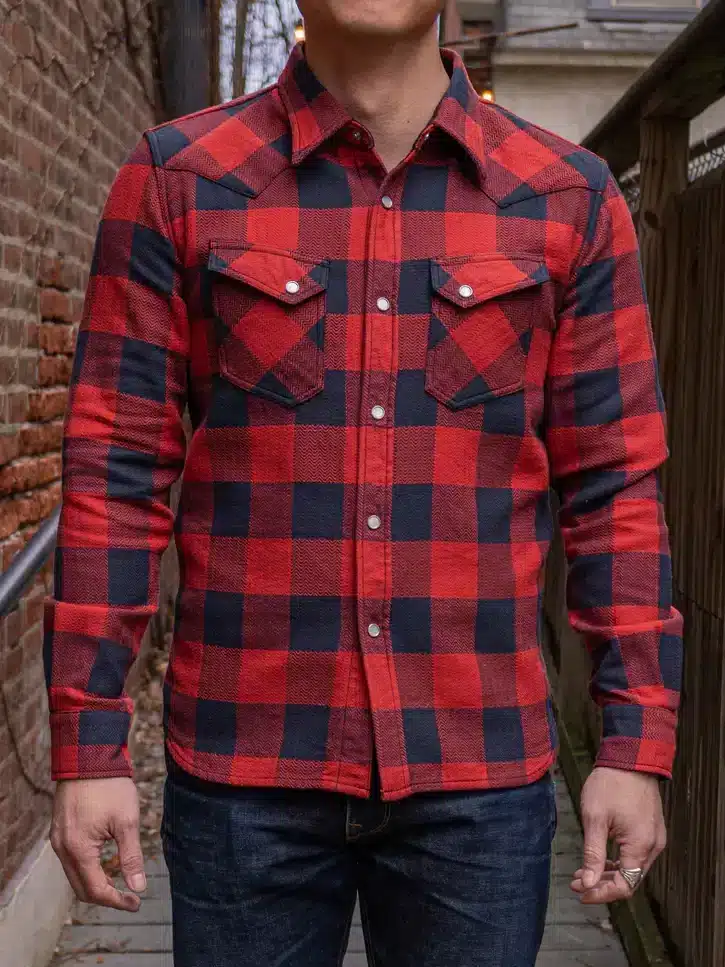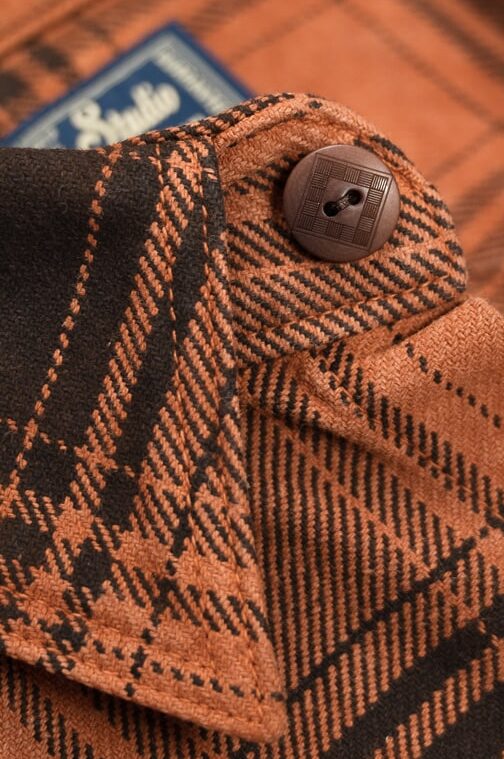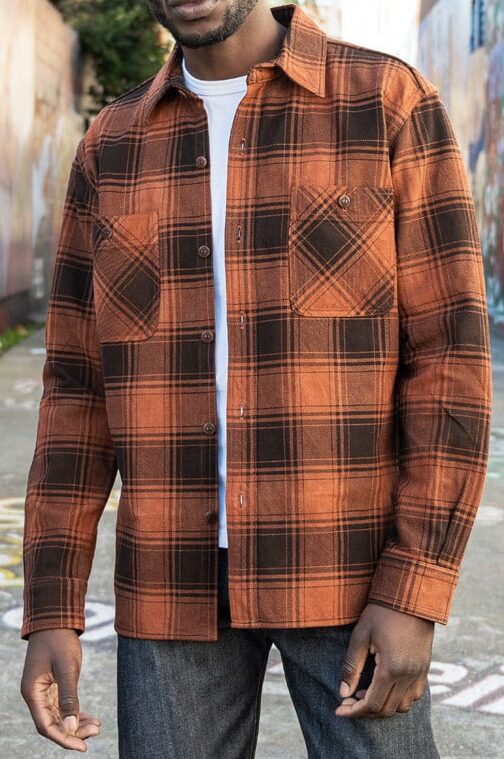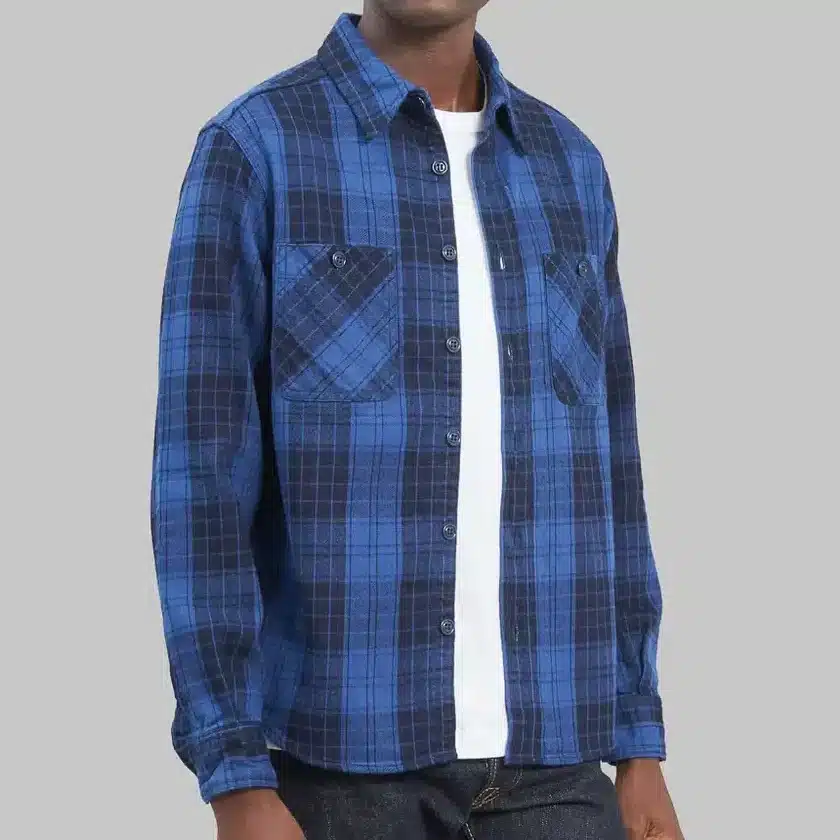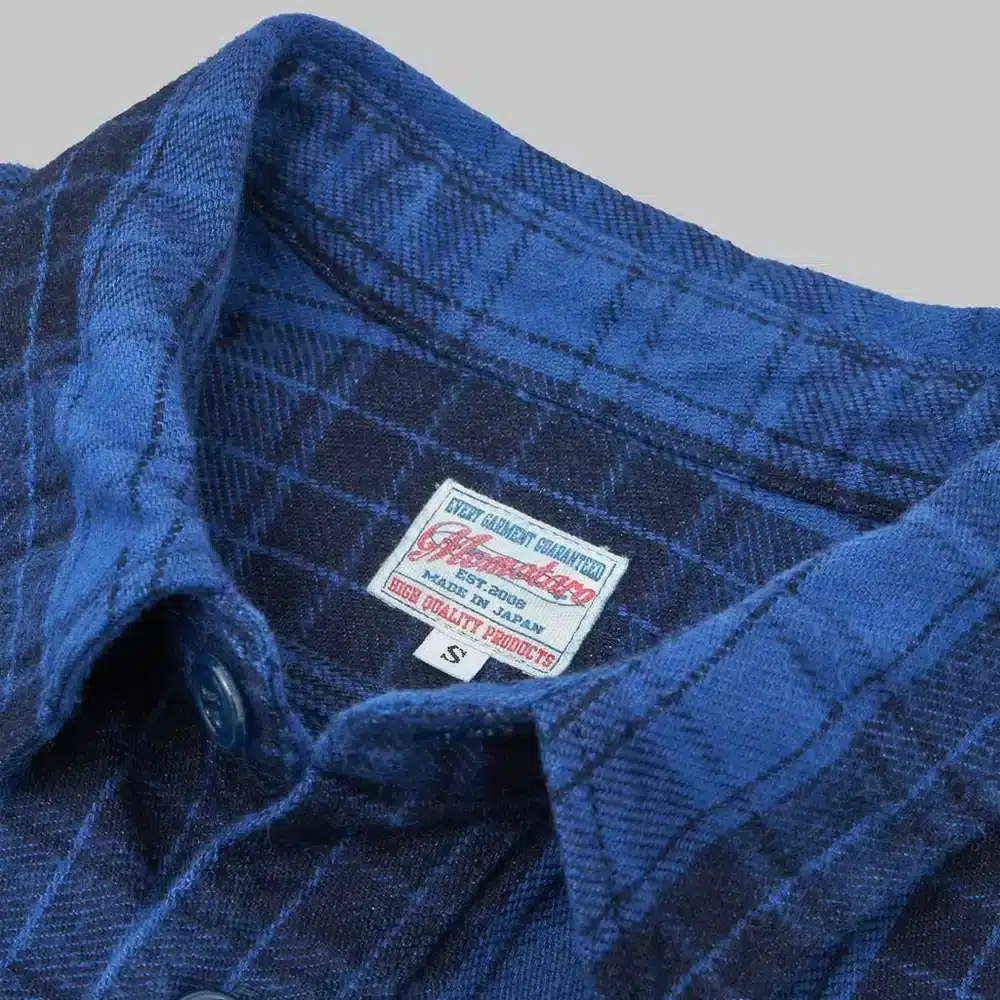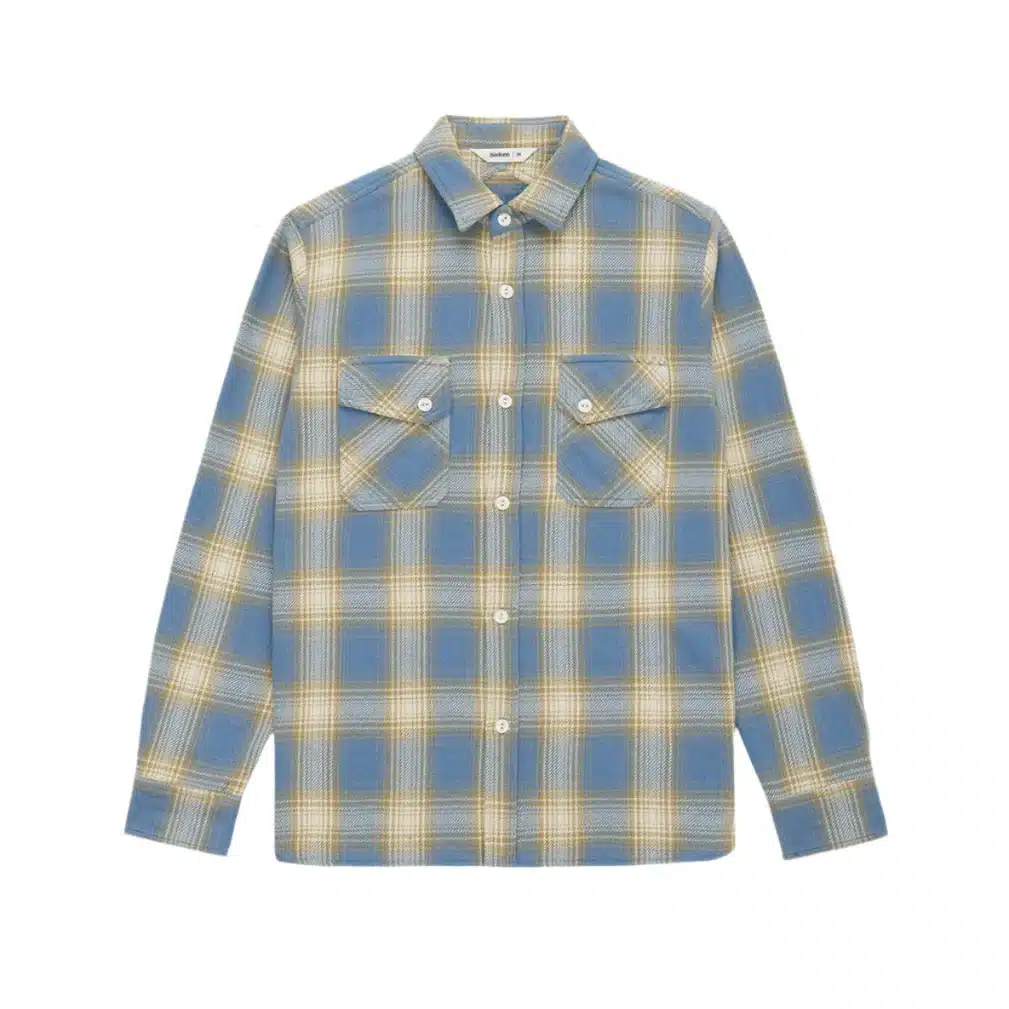All products are hand-picked by us. When you buy through our links, we may earn a commission.
9 Tips to Help You Make the Most of One of Our Favourite Combos (Flannels and Jeans)
For down-to-earth combinations, it’s hard to beat the pairing of a great pair of jeans and a flannel. Workwear brands have long understood this, and many of the brands we love pour as much of their passion into their flannels as they do into their jeans

Workwear enthusiasts respond in kind, snatching up new flannels every season and adding them to toppling piles of flannels that allow them to keep their looks fresh and perpetually stylish—the flannel/jeans combo never goes out of style.
While the combination is easy to pull off, there are certain approaches that work better than others. We’ve assembled nine tips that will help you leverage all the style potential in your flannel.
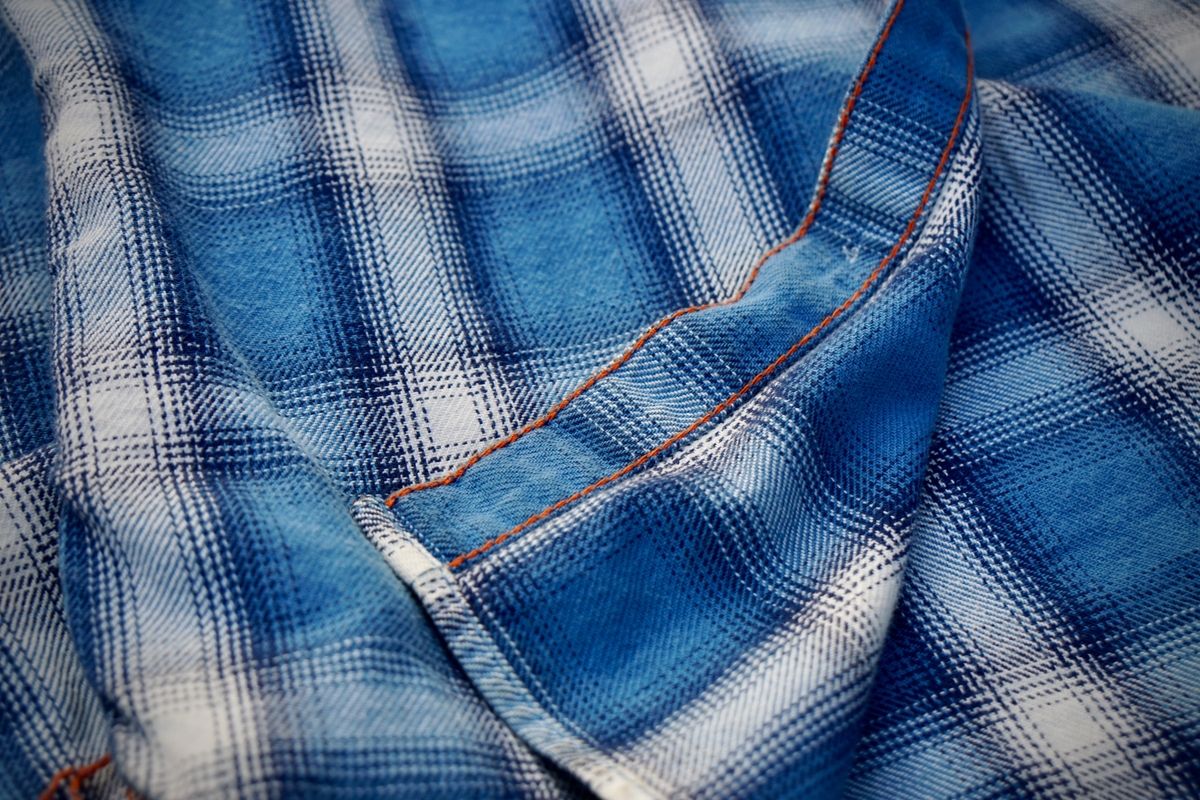
With each tip, we’ve also included one of our favourite flannels. If you’re looking for advice on either what to wear or how to wear it, you’ll find everything you’re looking for below.
Before we dive in, it’s important to note that we’ll be focusing on rugged flannels in the list below. There are more refined flannel fabrics that are meant to be worn tucked in—usually with suits or blazers.
If you’re looking for tips on how to incorporate these luxurious and lightweight flannels into smart or smart casual outfits, you won’t find them below. I own and love a few of these dressy flannels, but they’re not in the same category as the kinds of heavy and well-made workwear we’ll be discussing below.
The Flagship Flannel
Selvedge lovers around the world adore Iron Heart flannels for very good reason. Arguably the best-made flannels on the planet.
Tip #1: Well-Made Flannels Are Worth Every Penny
Just as you wouldn’t hold up a great pair of selvedge jeans with a cardboard belt, you also shouldn’t scrimp on your flannel if you want everything to hang together nicely. Something well-made will set you back a pretty penny, but you’ll quickly see that the investment pays dividends in terms of both durability and style.
The signs of quality:
- Heavy and plush fabric
- Triple-stitched and flat-felled seams
- Sturdy hardware (the snaps should come together with a satisfying click and should not rattle when unfastened)
- Pattern matched pockets (some good flannels have purposely cross-cut pockets, though)
The best flannels on the market will set you back nearly as much as a great pair of jeans, but you’re getting a lot of bang for your buck. They’re practically indestructible, and, if you’re wearing heavy selvedge, the combination is bedrock-blasting dynamite.
Flannels that Cut Like a Katana
Samurai’s flannels have some of the most distinctive colourways we’ve ever seen. Far from your typical plaid, they cut through and make a deep and lasting impression.
Tip #2: Find Your Perfect Flannel Fit
Whether you’re trying flannels on in person or ordering them online, the perfect fit is absolutely essential if you want to wring all of the value and potential out of your new flannel.
Here are a few finer fitting points for flannels:
Collar: Fastenable and Comfortable
Even if you aren’t planning on wearing it buttoned to the throat, you should be able to fasten the flannel easily around your neck, with enough room to slide one or two fingers (no more than this). When trying the flannel on for the first time, button it all the way up.
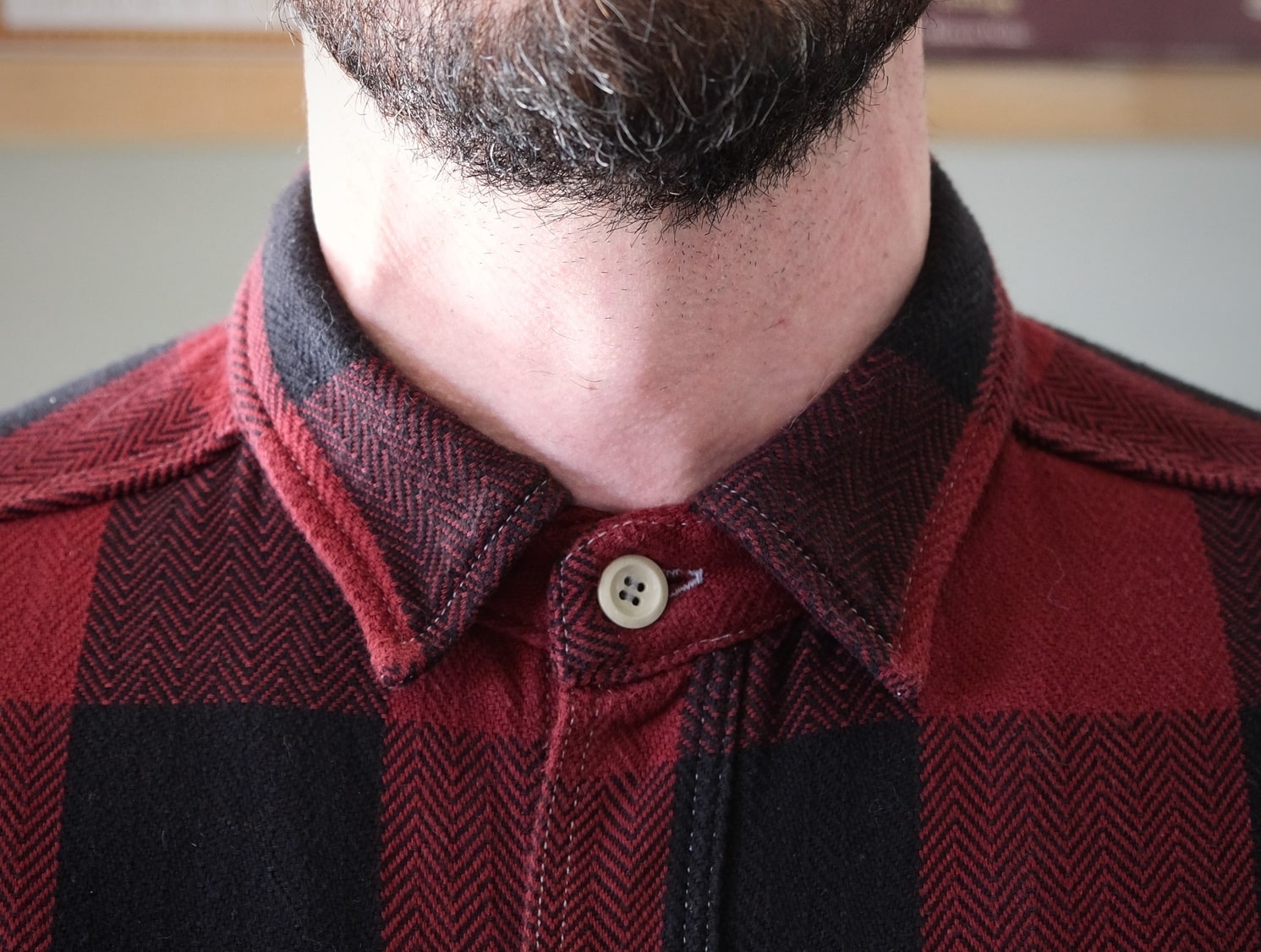
Length: Hit Below the Belt
The bottom hem should be at least long enough to cover the opening of your pockets (I like them a little lower than that), and the last snap or button should fasten across the belt line or a little below that. The curved gusset at the side of the shirt shouldn’t rise above your belt line.
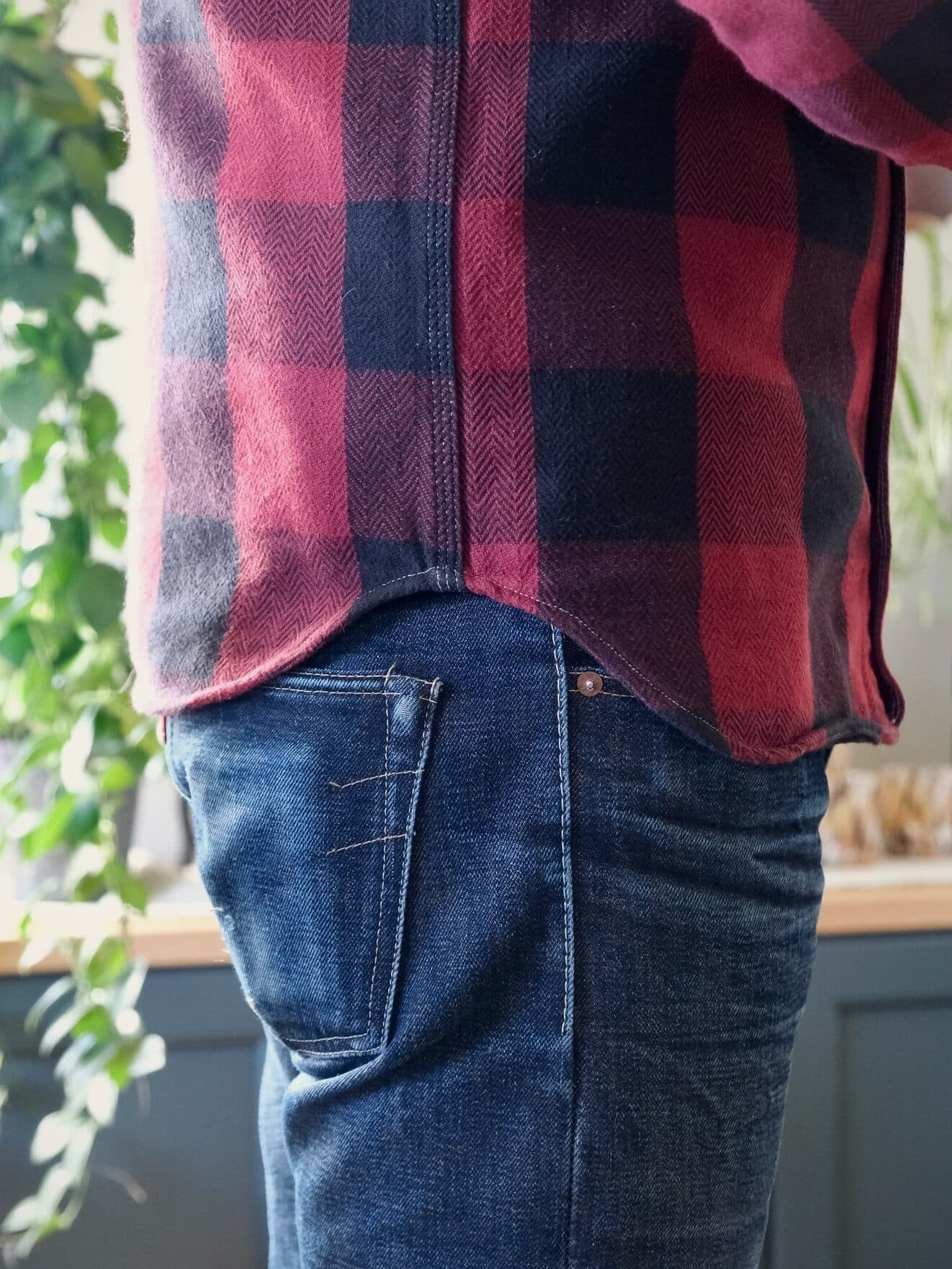

Sleeves: Long Enough to Stay Put
The sleeve should be long enough to extend all the way to the heel of your hand, and you should be able to fasten the cuffs snugly and comfortably around your wrist.
When you extend your arms in front of you, the sleeve should move very little ( if it rides up your forearm it is too short).
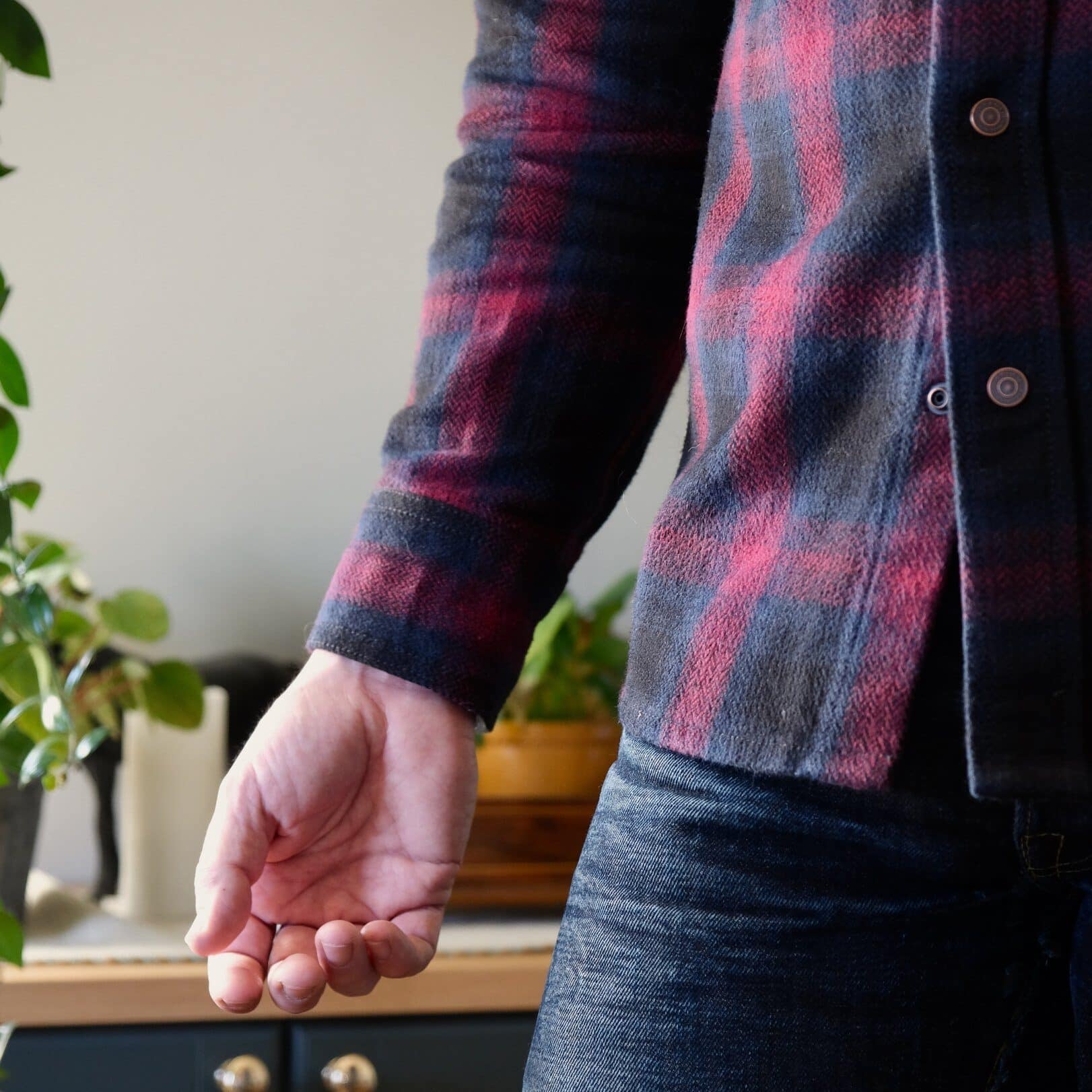
Chest and Shoulders: A Little Wiggle Room
Heavy flannels are designed to be worn as overshirts, so the chest and shoulder measurements should be generous enough to give you some room to move and to layer.
Raise your arms to chest level and then bring your elbow back like you’re bench pressing. This should put a bit of strain on the buttons or snaps, but not enough to pop them open.
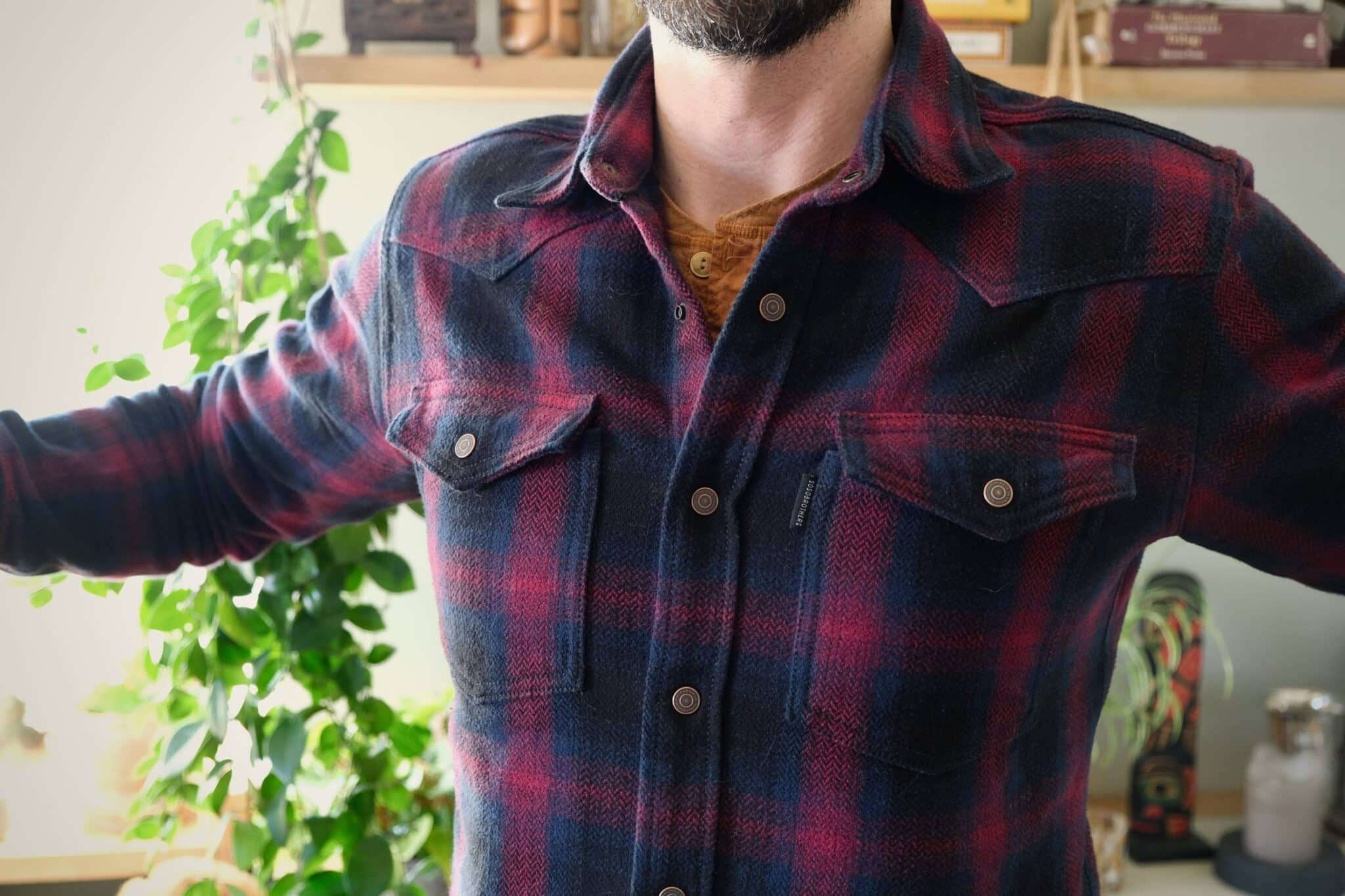
If your favourite selvedge brand’s flannels don’t fit you perfectly, keep looking. If the Japanese brands don’t have your number, an American or European brand might be a better choice. Make fit your top priority. Everything else comes second.
Get Rid of the Guesswork
If you’ve struggled at all to find the perfect-fitting heavy flannel, SOSO has recently jumped into the heavy flannel game. Every measurement is customizable, and the 13.5 oz. fabric is excellent.
Tip #3: Weight for Your Season
Thomas and I love wearing (and recommending) heavy flannels, but we both live in Scandinavia, where warm clothes are a must. Even here, when the sun is shining during those short summer months, it’s hotter inside a snapped-up heavy flannel than a Finnish sauna.
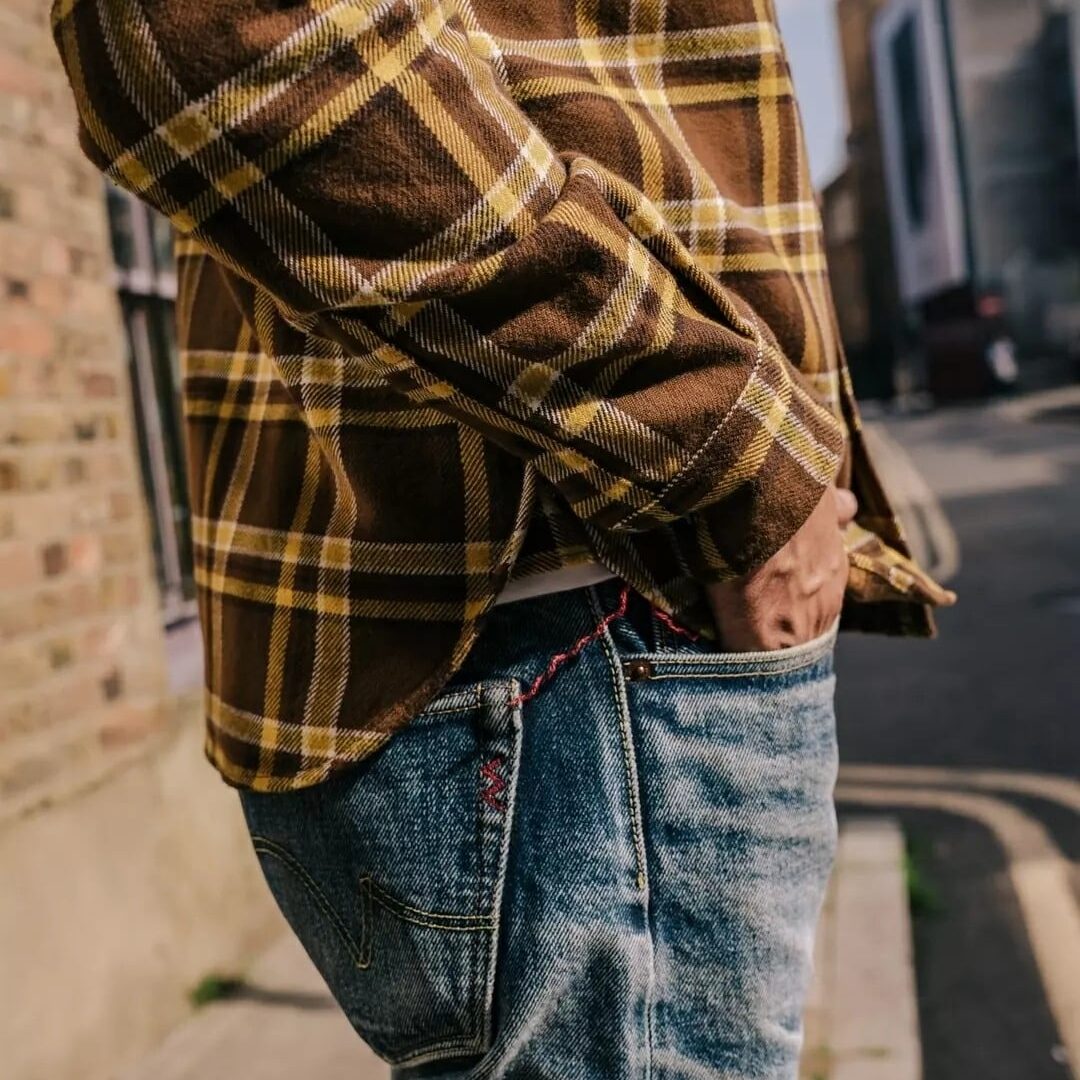
If you wear heavyweight or super-heavyweight selvedge, it’s only natural to want the heavy flannel to go with it. The two are a natural match, and, for many, it’s worth the discomfort to get the style that heavy flannels bring with them.
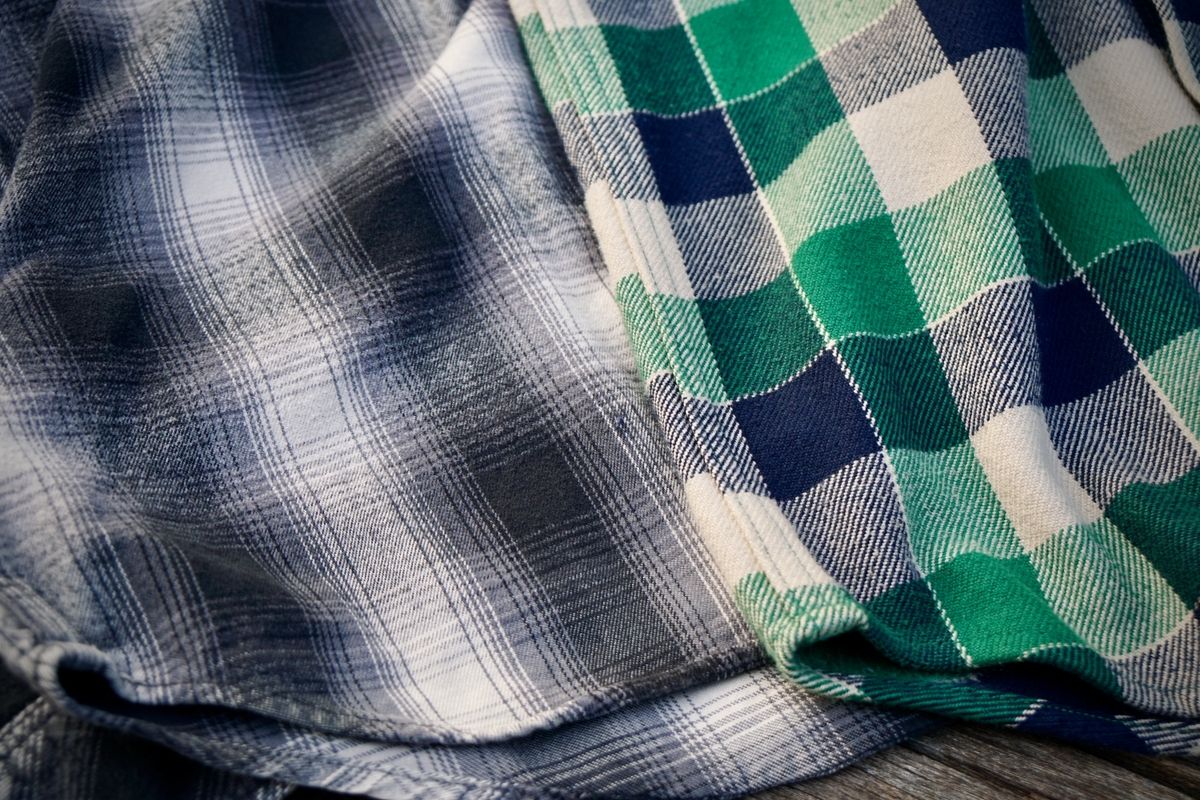
Still, you shouldn’t have to suffer for fashion. There are very good and very well made lighter-weight flannels that are much easier to wear during the summer months. Keep the heaviest flannels in reserve for when the season makes them not just stylish but practical as well.
The Heavyweight Champ
If weight and quality are synonymous for you, UES flannels are as heavy as they come. Another brand with very Japanese sizing, you’ll want to check the measurements carefully before ordering.
Tip #4: Don’t Tuck Heavyweight Flannels
Heavy flannels are designed to be worn untucked. They’re at least as heavy as a lot of jackets on the market and, just as you’d never tuck in a jacket, you shouldn’t tuck in a heavy flannel either.
It pads out your belt line and everything immediately adjacent to that line. Even slim gents can’t pull it off.
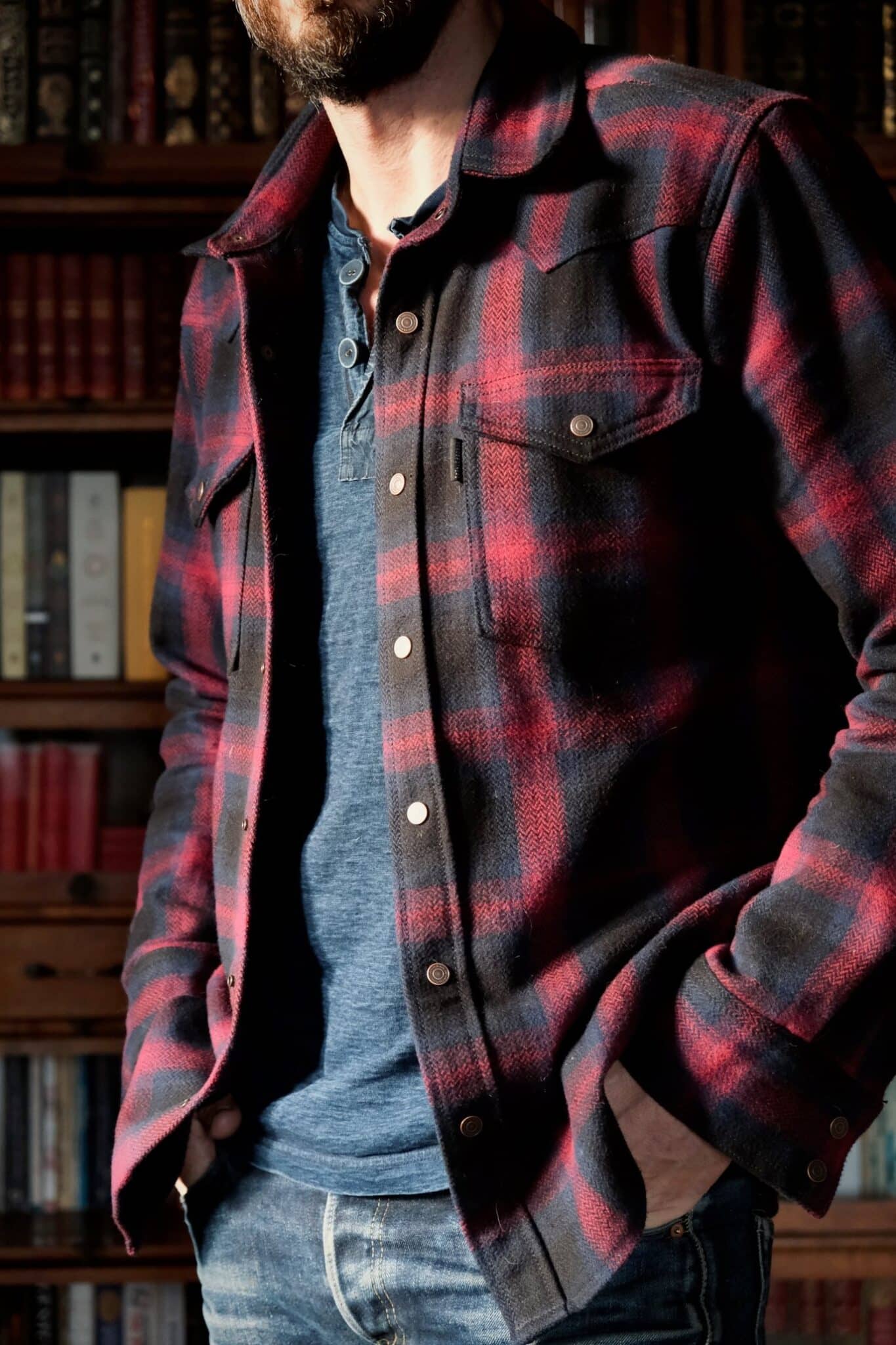

If you’re looking for flannels you can tuck in, try lighter flannels like this Real McCoy’s Summer Flannel. Anything advertised as “summer weight” or “lightweight” should fit the bill. The breezy flannels will look perfectly natural as the centrepiece of either rugged or refined tucked-in looks.
As an added bonus, it won’t leave you hot under the collar like the heavier flannels. Most folks who want to tuck their flannels in do so because they want to layer something on top of it. Do this with a heavy flannel in non-freezing temps and you’re likely to overheat.
Southwest Charmer
Like so many of the pieces in their line-up, Freenote’s wool and cotton flannels are dripping with that distinct Southwest charm—equal parts dusty cowboy and road-worn renegade.
Tip #5: Skirting an Issue
Since most flannels terminate well below the belt line, this can create issues when pairing them with classically cut jackets, like the Type I, II, or III. The combination results in a skirt or apron of fabric that extends below the bottom of the jacket. Some folks love this, but we’re not in their camp.

If you’re planning to pair flannels and denim jackets regularly, you’ll want to look for modern interpretations of the classics that have longer bodies. Another alternative is chore coats, which are designed to cover considerably more.

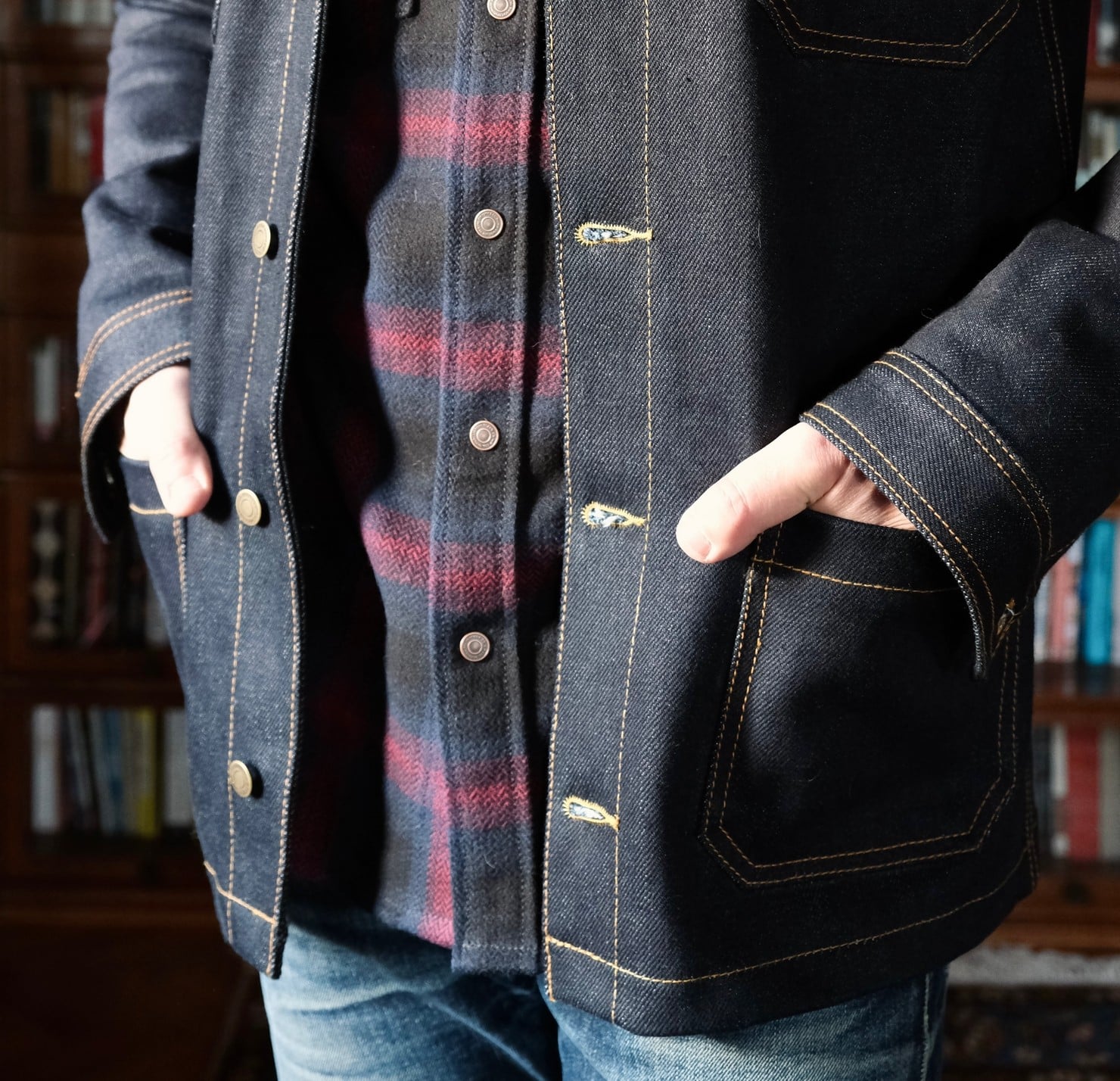
I have a traditionally cut Type III, a varsity jacket, and a N-1—all of them cut so that they sit on the belt line. I’ve learned to pair them with shorter shirts and knits.
I love a thin strip of contrasting colour at the bottom of the jacket, but anything more than an inch or so of apron is more than I can bear.
If It Has To Be Short
Flat Head’s sizing is very Japanese, which means that they might be a great choice if you’re determined to wear your flannel under shorter jackets. Check those measurements carefully.
Tip#6: Fiddle with Fasteners
Flannels (particularly heavy ones) give off an entirely different vibe depending on how they’re fastened. They’ve got a rebellious streak, and we can lean into that a little bit more with every snap we leave unfastened—most days, I don’t have even a single snap fastened.
It’s good practice to play around with the fasteners to see how small changes can make a big difference. Start at the throat. With only the top button left open, the flannel is still quite conservative. Thomas and I both like to leave at least the top two snaps undone.

From there, look down towards your waist. If the last snap is either on or below the belt line, leave it unfastened. The flannel spreads nicely over the hips and has a little bit more of that devil-may-care attitude—which is further amplified when we keep going and leave two or three of the bottom snaps unfastened.
I like to leave my cuffs unfastened, while Thomas prefers the look and feel of fastened cuffs. I also like to roll the cuffs either once (folding the cuff in half) or twice (double the length of a straight cuff). Lighter flannels can be rolled up to the elbow, but the heavier ones look better when they sit in the middle of the forearm.
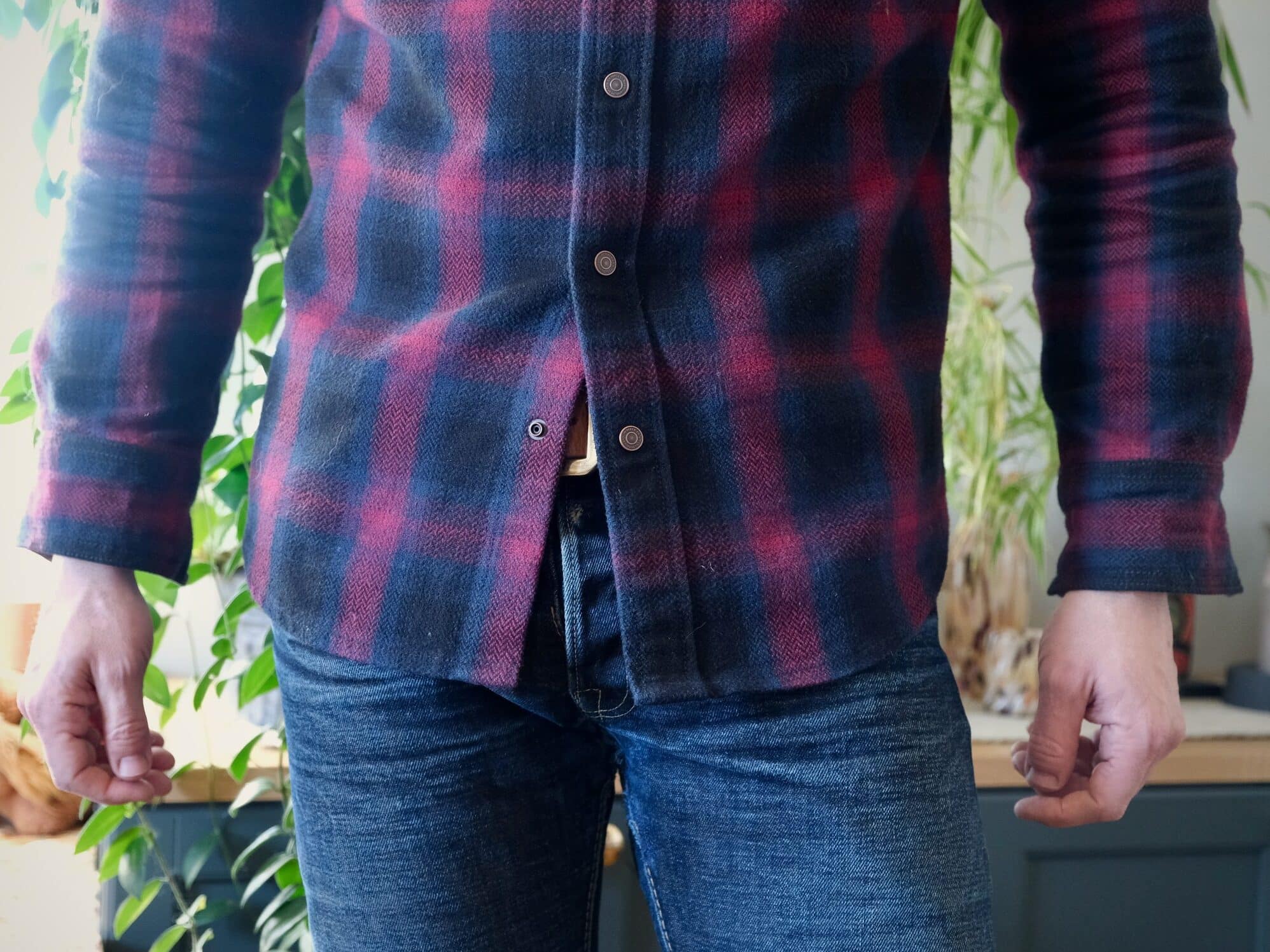
Finally, if there are flaps on the pockets, I like to leave them unfastened. If the pockets are work style, I like to leave the buttons fastened.
You’ll find your own idiosyncrasies if you fiddle with the fasteners until you find a style that works for you.
Swede Dreams
Swedish brand Indigofera have been a reliable source of great flannels since they first started producing them. The Norris and its more complex cousin, The Dawson, are both worth a closer look.
Tip #7: Coordinate Your Colours
We discussed the best and worst colours for pairing with indigo selvedge in another article that you’ll find here. It’s a good primer course for those who want to start putting together pieces and colours in eye-catching ways.
Flannels, usually multi-colour plaids, present both a challenge and an opportunity. They add a riot of colour to outfits, often becoming the focus point for the entire outfit. Still, while flannels and dark indigo selvedge are natural companions, dark blue gets along better with some colours than with others.
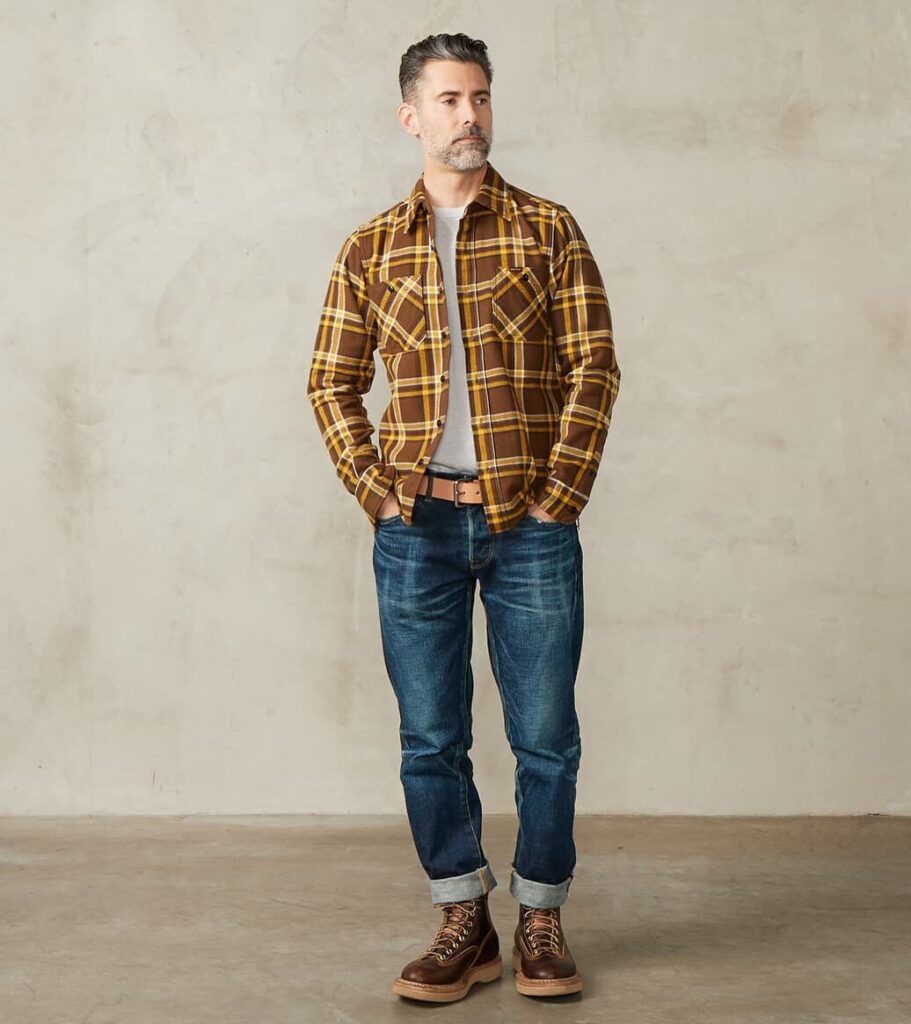
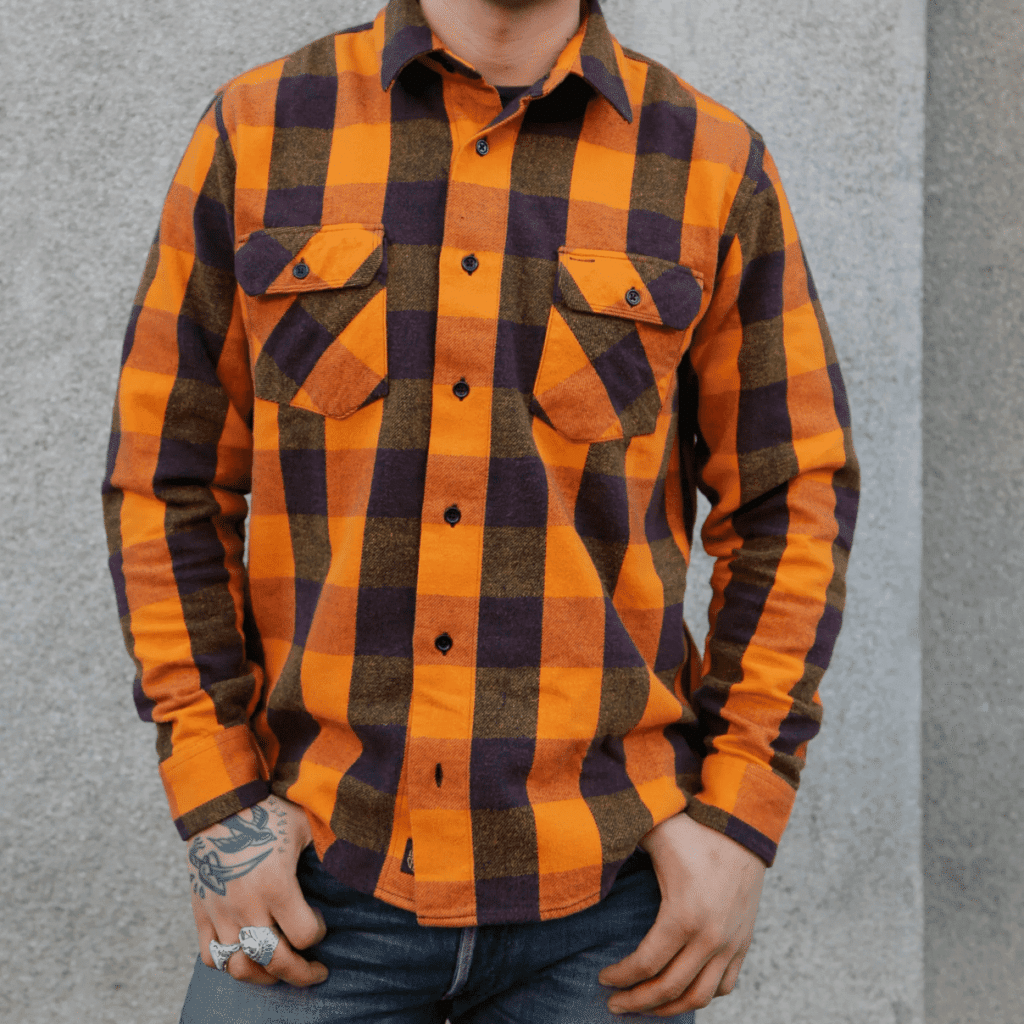
When the dominant colour in the plaid is red, orange, brown, or yellow, the contrast will be natural, drawing and pleasing the eye. Flannels with blue as the dominant colour might not contrast as strikingly, but it’s hard to go wrong with blue on blue.
If, however, the dominant colour in your flannel is green or purple (both of which sit directly next to blue on the colour wheel—which you can learn more about in our colour guide), the combination is more problematic.
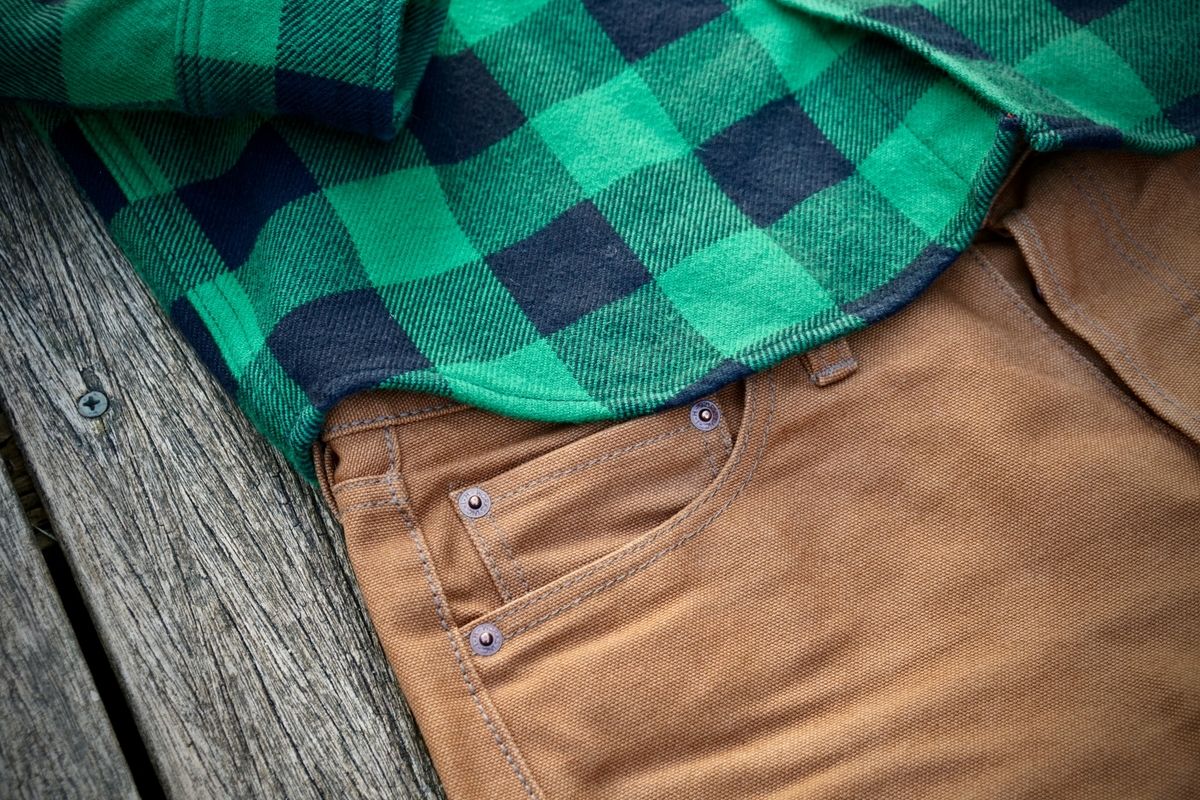
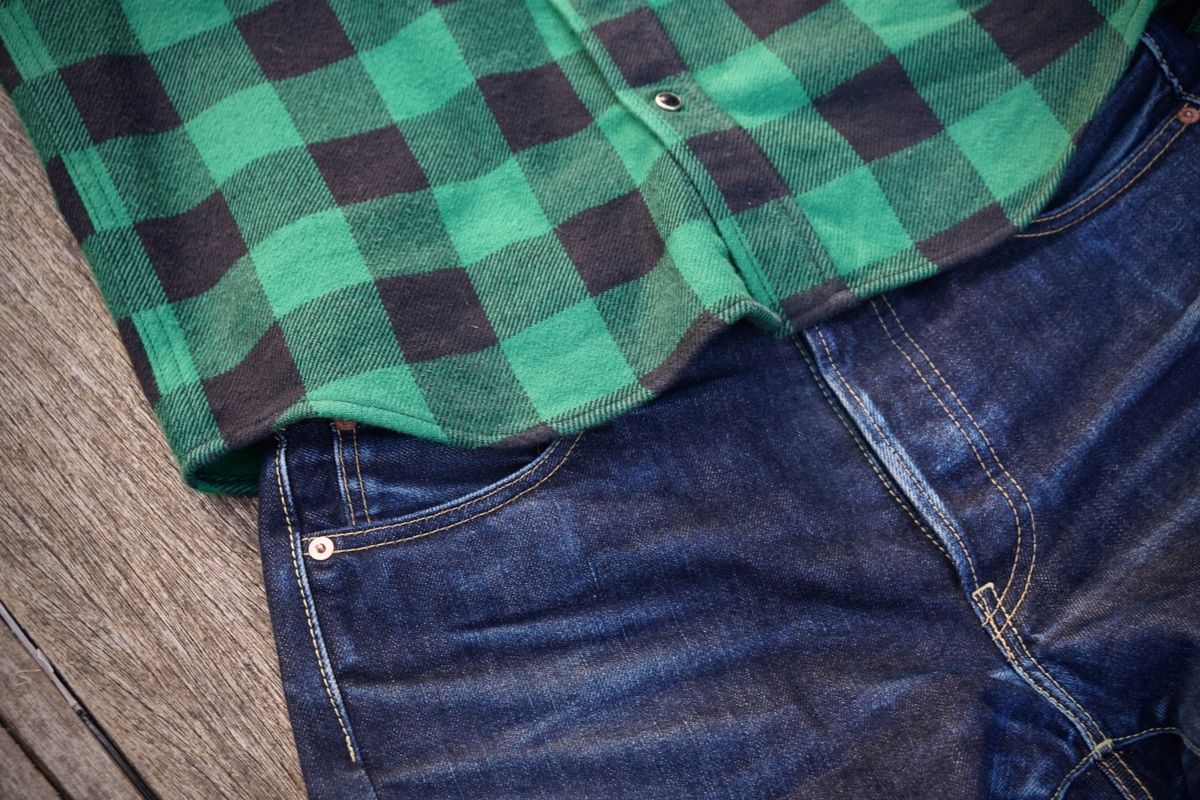
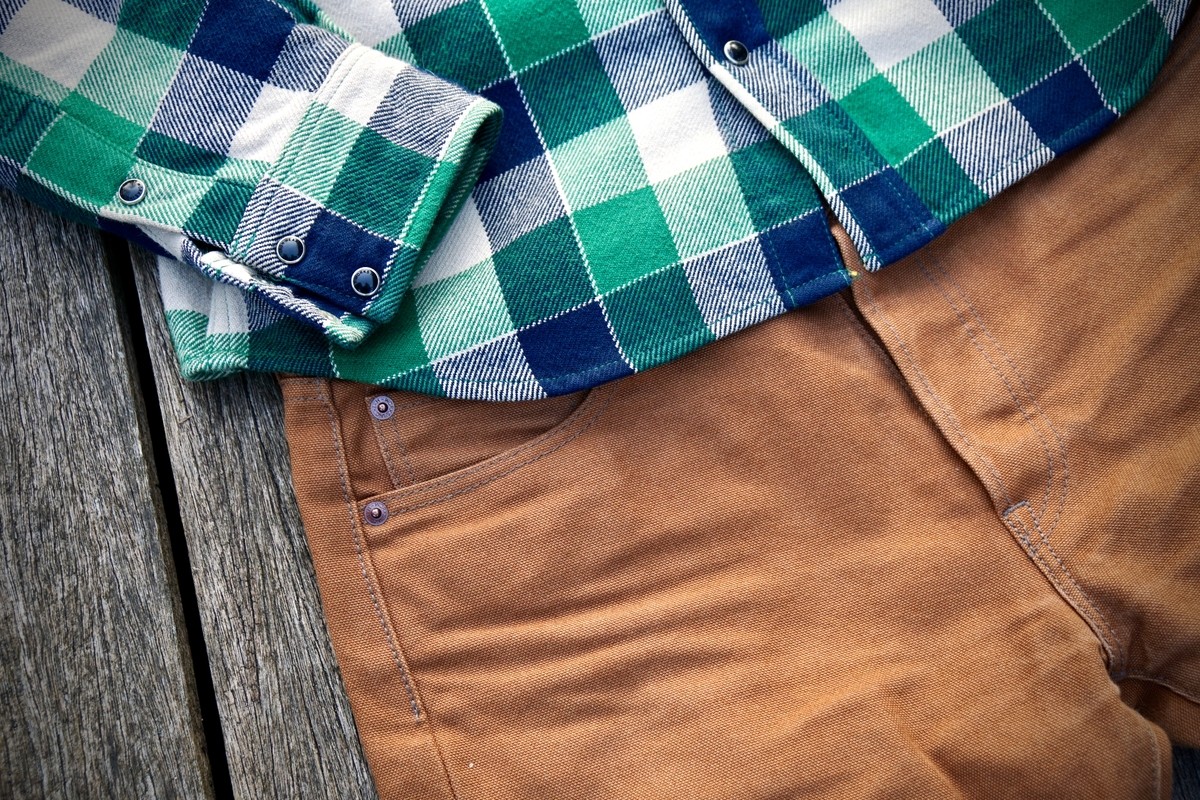
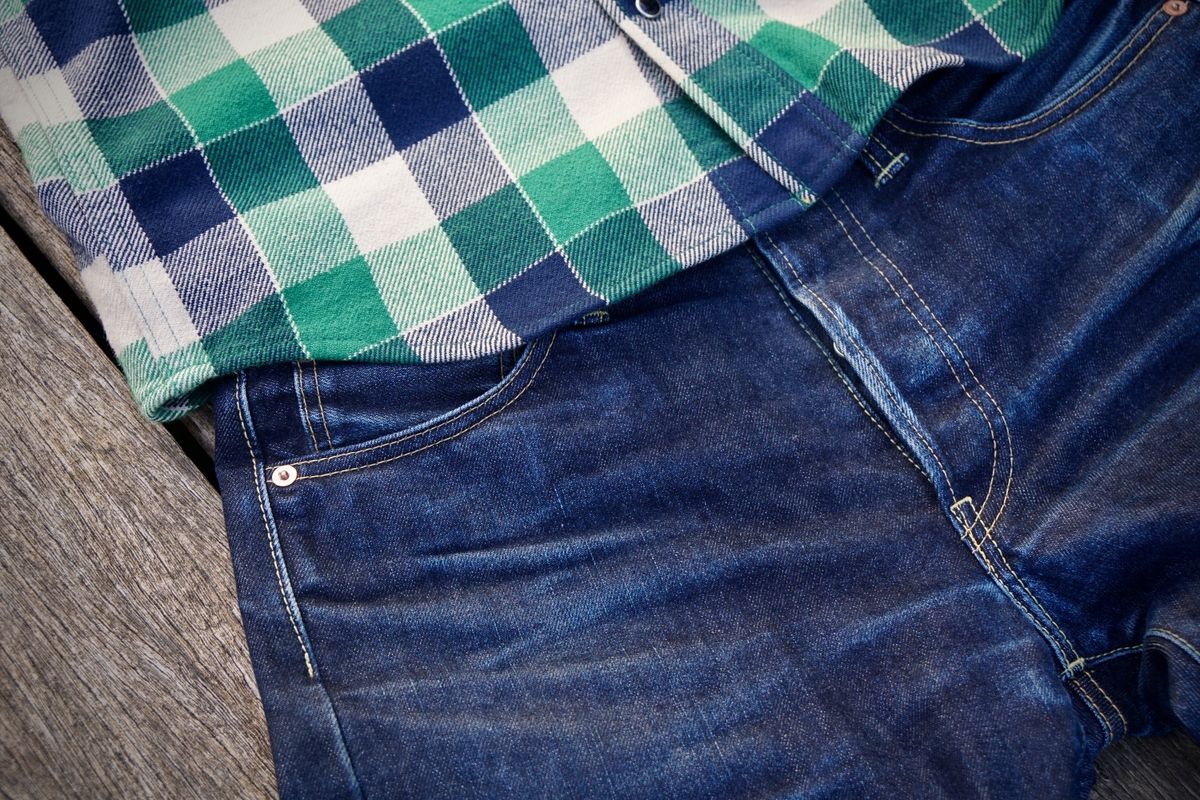
If you have a fondness for green or purple, try combining them with black or duck jeans. They’ll gel like long-lost friends.
The Slept-On Classic
Studio D’Artisan produce some of the best flannels in the game, but the brand frequently gets left out of conversations about great flannels. Not a brand to sleep on.
Tip #8: Love Your Layers
Brushed flannels feel great next to the skin, but this can change quite dramatically when we start to sweat (virtually guaranteed if the flannel is heavy). It’s far better to layer the flannel over cotton basics like tees and henleys.
You can wear them over a sleeveless undershirt in the warmer months, but this doesn’t solve the issue of the direct contact between the brushed interior and your armpits. It’s far better to layer them over a light tee and to wear the flannel open, which will allow air to circulate.
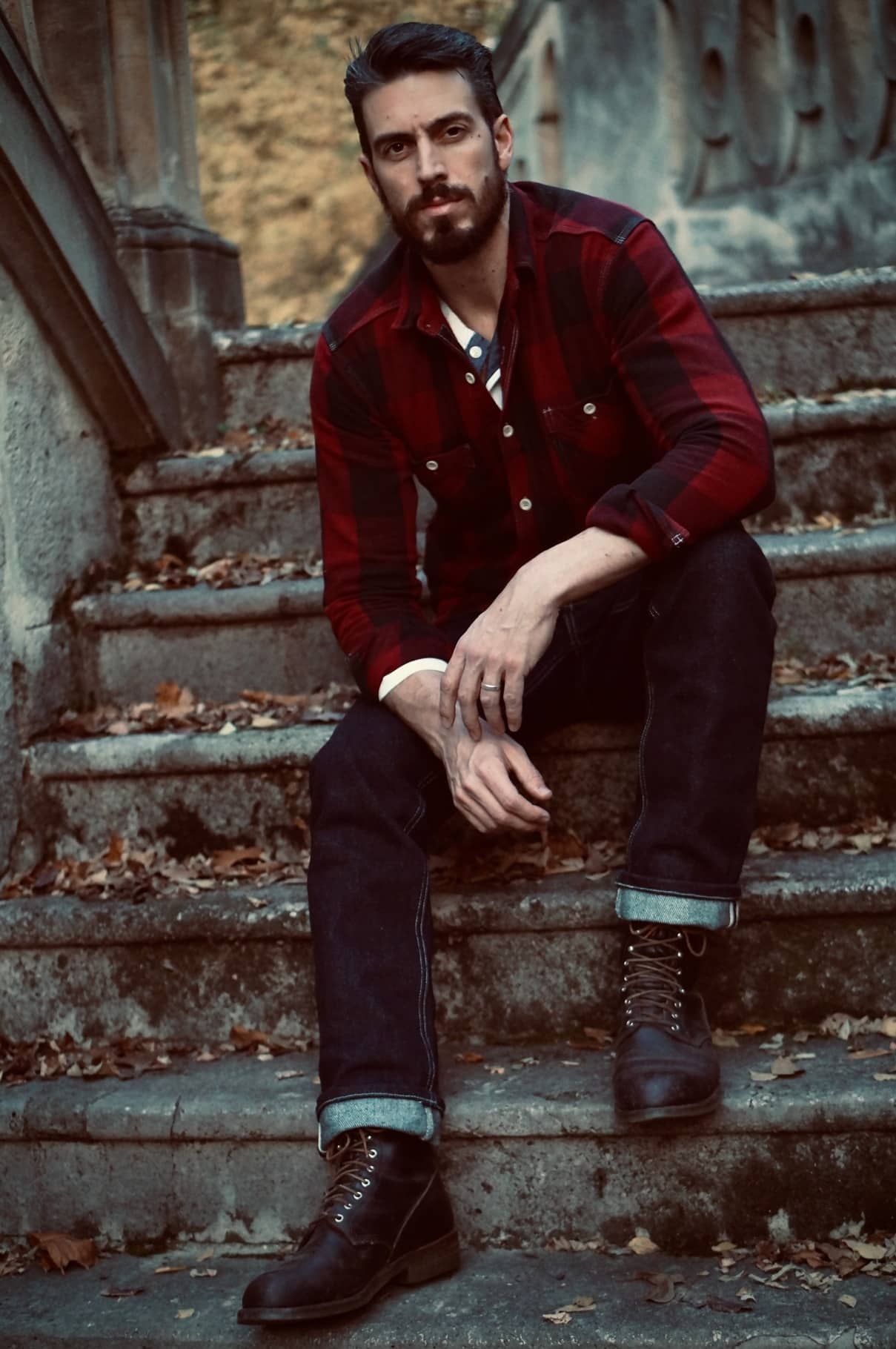
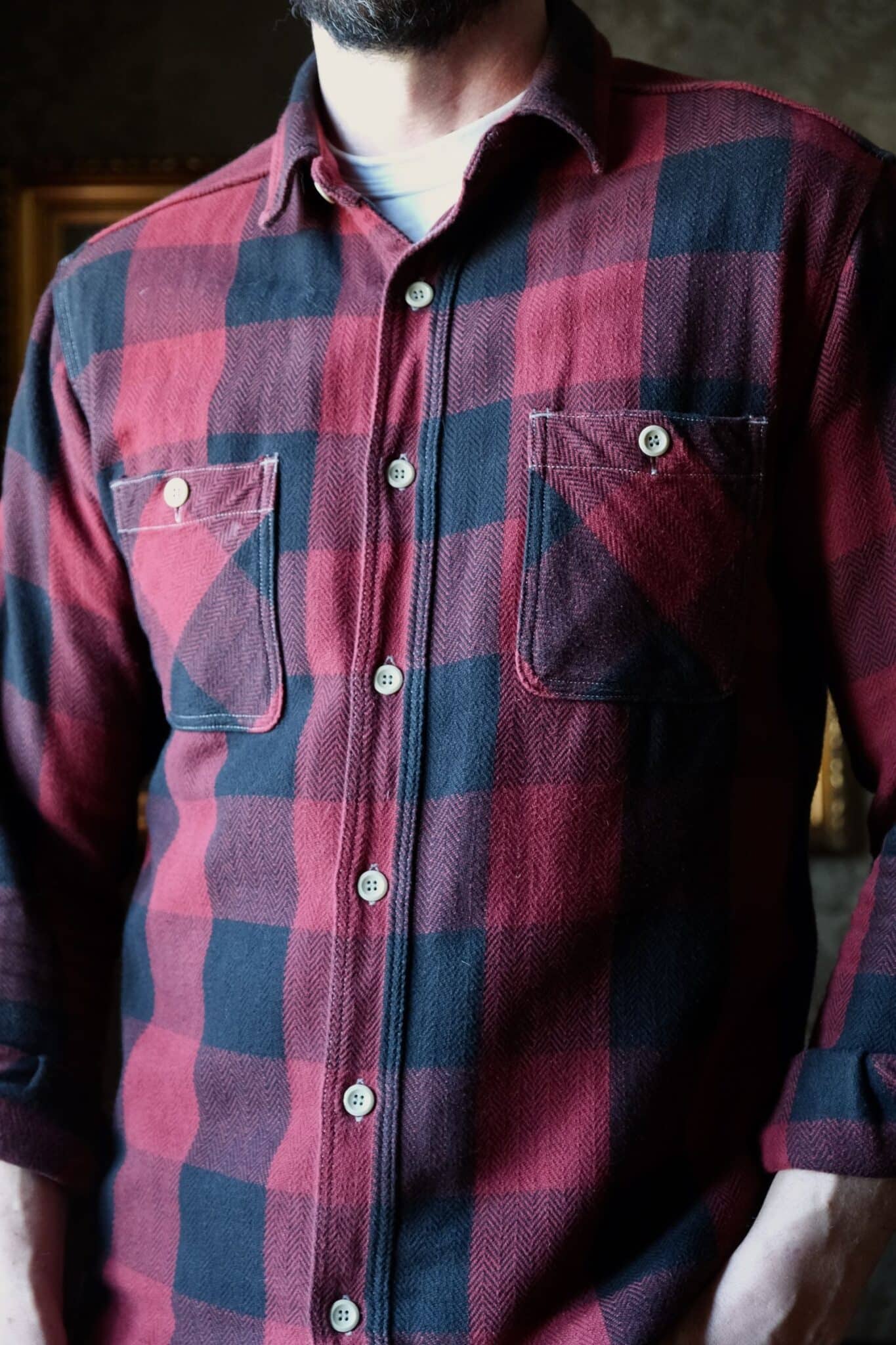
Unless you sweat profusely or have a particularly strong body odour, if you always wear your flannel over something, you should be able to get away with washing it rarely or even never. Thomas and I both have flannels that have been worn a ton without ever having seen the inside of a washing machine. The colours are still as vibrant as the day we bought them.
Thomas’s go-to is the tee. I prefer the henley (either short or long-sleeved), which I always wear with all of the buttons unfastened. This allows me to show a little more skin, and the loose placket provides some visual interest around the open part of the shirt.
If the flannel is slim-fitting, keep layers thin (you should still be able to fasten it easily over whatever you layer it over). If you’ve got some room to work with, you can experiment with layering it over sweatshirts, hoodies, and knits.
Peachy Keen
Momotaro flannels can move easily between seasons and styles, making them a great all-around rugged flannel for those who like options.
Tip #9: Wear Your Flannel Like a Jacket
Heavy flannels can look great when worn under denim or leather, but I’ve always found them to be most effective when treated as an indoor/outdoor jacket.
When the temperatures drop, I tend to wear the flannel around the house, but, if I need something really warm, I leave the flannel at home, opting instead for knits and thermals under my heavy outerwear.
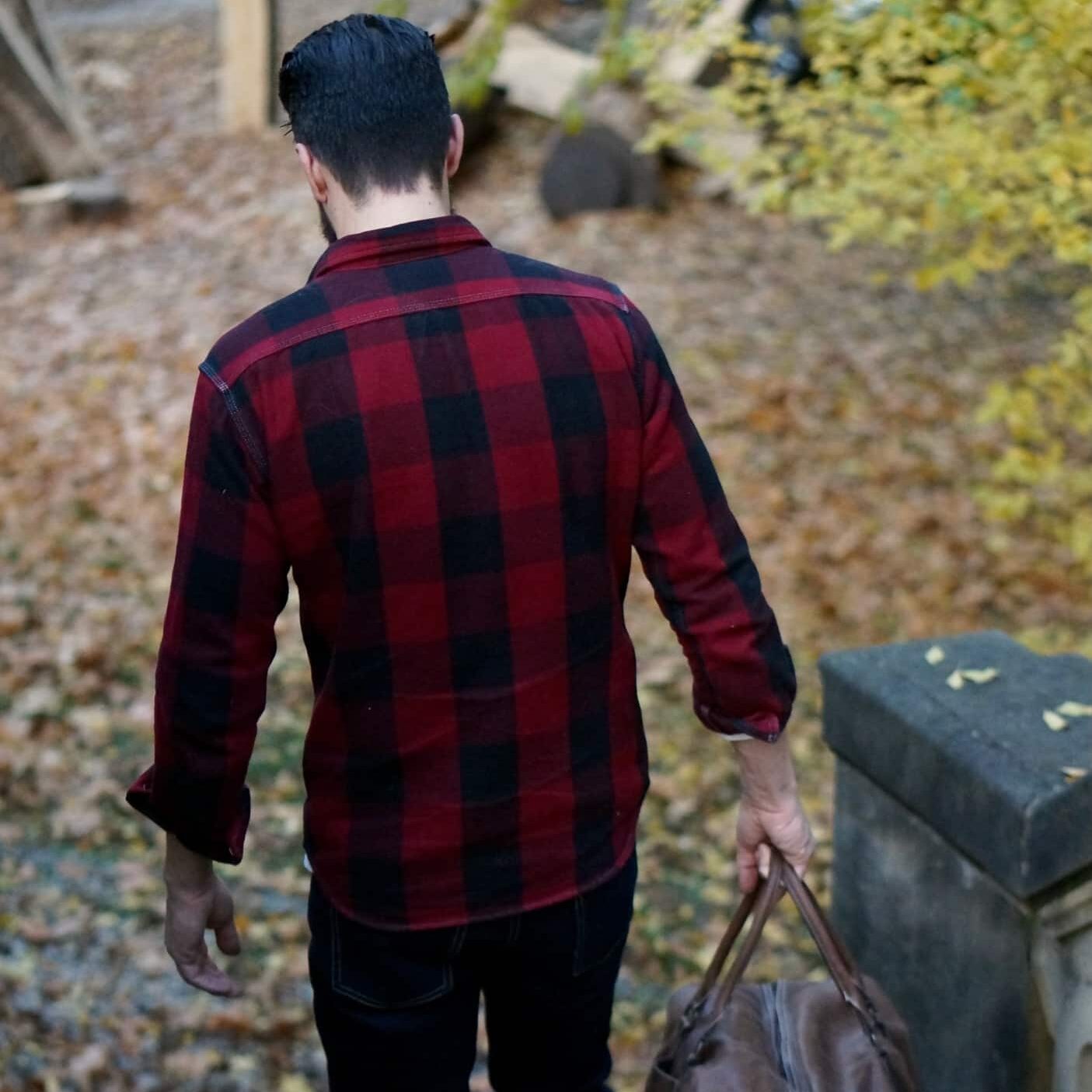
In the autumn and spring, I wear the flannel as my outermost layer, either open or closed depending on whether I want to keep the cool air out or let the warm air in. The vibrant splash of colour, especially when combined with the weight of heavy flannels, makes the shirt far more of a statement piece than it is when I bury it under outerwear.
This is one more very good reason to size up when purchasing heavy flannels. Thin flannels look great when worn slim, but the heavy stuff isn’t a good match for skin-tight fits. Let it move around your body, whether fastened or open.
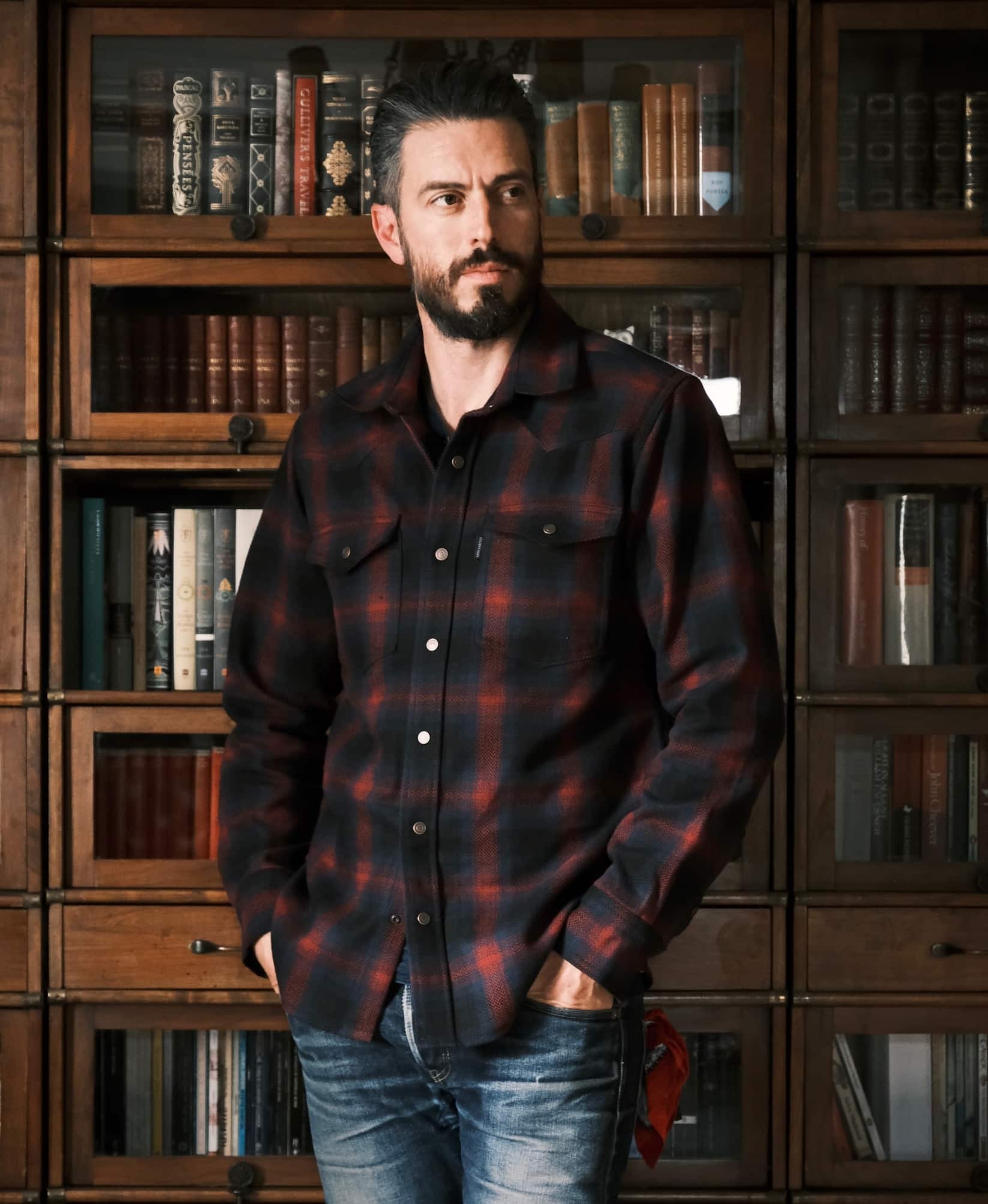
You don’t want to be swimming in it, but, rather than shimmying into it like a wetsuit, you should be able to just throw it over your shoulders—more like a jacket than a shirt.
Crossing Continents
3sixteen’s Crosscut Flannels have, since their introduction more than 15 years ago, been a dependable choice for those who want a Japanese fabric cut for Western bodies.
Styling Flannels and More
If you’re looking for more rugged style advice, you can check out our Style FAQ, our guide on Colours to Wear with Raw Jeans, and our Rugged Rules.
To get the latest on what we’re wearing and watching delivered straight to your inbox, subscribe to our newsletter here.
The post Timber!! How to Combine Flannels and Selvedge Jeans appeared first on Denimhunters.
DENIM and PATCHES sourced this post originally published on this site
